Shooting the Messenger Syrian Armenians: Who Are They?











A latest vote count shows that The Republicans have taken the House of Representatives from the Democrats, who have been dominating it since 2019. Meanwhile, the Senate is expected to split between the two parties or, in the best-case scenario, fall into the lap of Democrats who could win with a slight majority.
In the Cover Story, Dalia Ziada writes about how, since before the congressional midterm elections in the United States, observers in the Middle East have been wondering about the election’s influence on the future of the Biden administration’s foreign policy in the region.
Ziada observes that parallel to this, an equally important question should be asked about the potential impact of the Middle East countries’ policies on the future of the U.S. administration of President Biden.
In the Politics Section, Jiwan Soz delves into the explosion that took place last Sunday on the commercial Istiklal Street in the center of the Turkish city of Istanbul, which is the second largest city in the country and the top tourist city.
Soz said that the explosion’s repercussions continue until now, as six people out of the 81 injured are still under intensive care. Additionally, Turkey accused the banned Kurdistan Workers› Party (PKK), which has been waging an armed rebellion since 1984, of being behind the explosion, but the Party denied this.
In the Interview Section, Motasem Al Felou interviews Syrian Armenians in order to give a quick view into the Syrian Armenian’s lives, identity and participation in the Syrian political, economic and social scene.
After the Syrian Crisis of 2011, the number of Syrian Armenians had decreased dramatically from around 100,000 to less than 30,000. Their grandparents are survivors of two ethnic cleansing tragedies: the Adana Massacre (1909) and the Armenian Genocide (1915). Many fled to the Fertile Crescent and Egypt, seeking refuge and peace. The current population in Kassab are survivors of a painful terrorist attack that took place in 2014, bringing down the number of Syrian Armenians from 8,500 to around 1,500
In the Sports Section, Sara Gamal interviews Thomas Libiih, the former Cameroon international, who played in the 1990 World Cup. During the interview, Libiih relived his African experience and expressed his expectations for the 2022 World Cup.
Libiih is a retired Cameroonian footballer who played for various clubs including Tonnerre Yaoundé and Ohud Medina. He was one of the best players in Italy in 1990
Read these articles and more on our website eng.majalla.com. As always, we welcome and value our readers’ feedback and we invite you to take the opportunity to leave your comments on our website.
A Weekly Political News Magazine www.majalla.com/eng
Editor-in-Chief
The Editor Mostafa El-Dessouki


10th Floor Building 7 Chiswick Business Park 566 Chiswick High Road London W4 5YG
Tel : +44 207 831 8181Fax: +44 207 831 2310
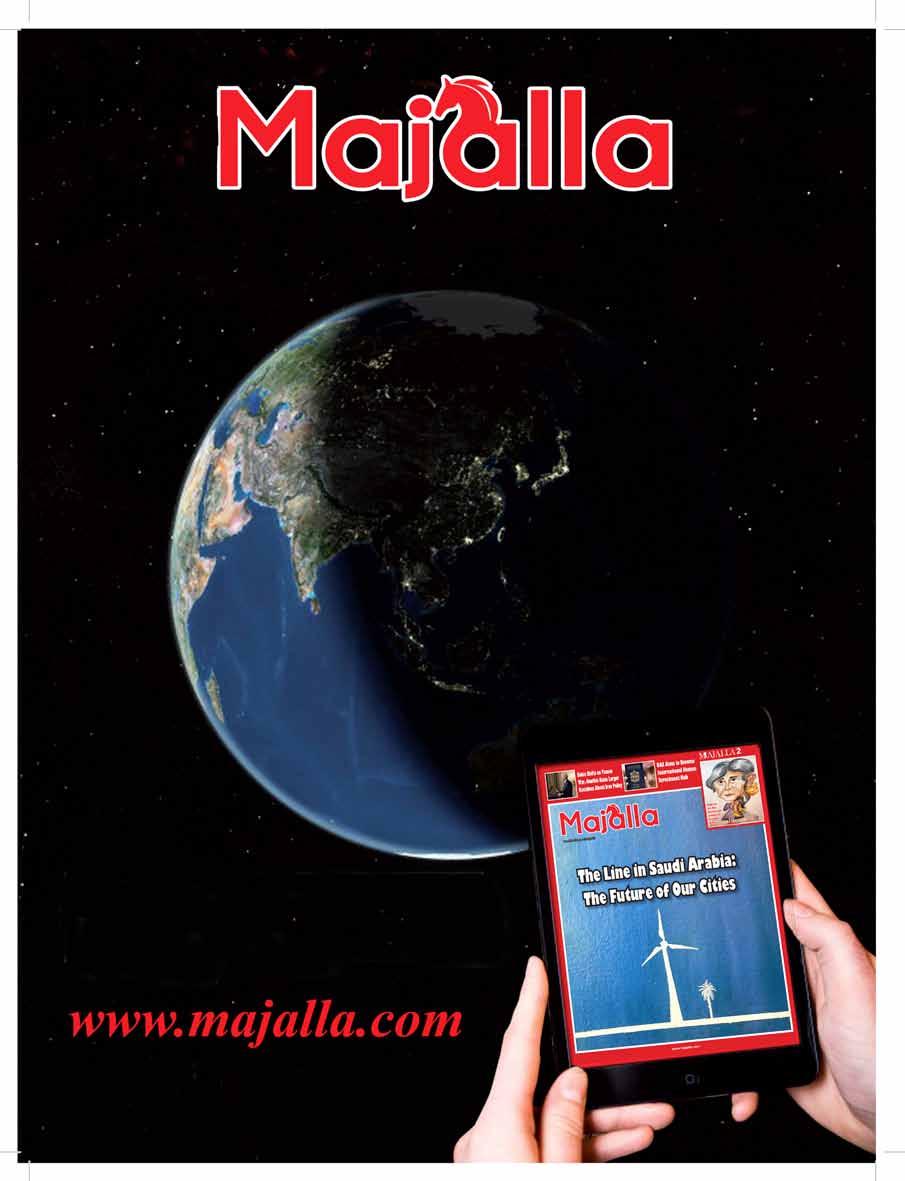

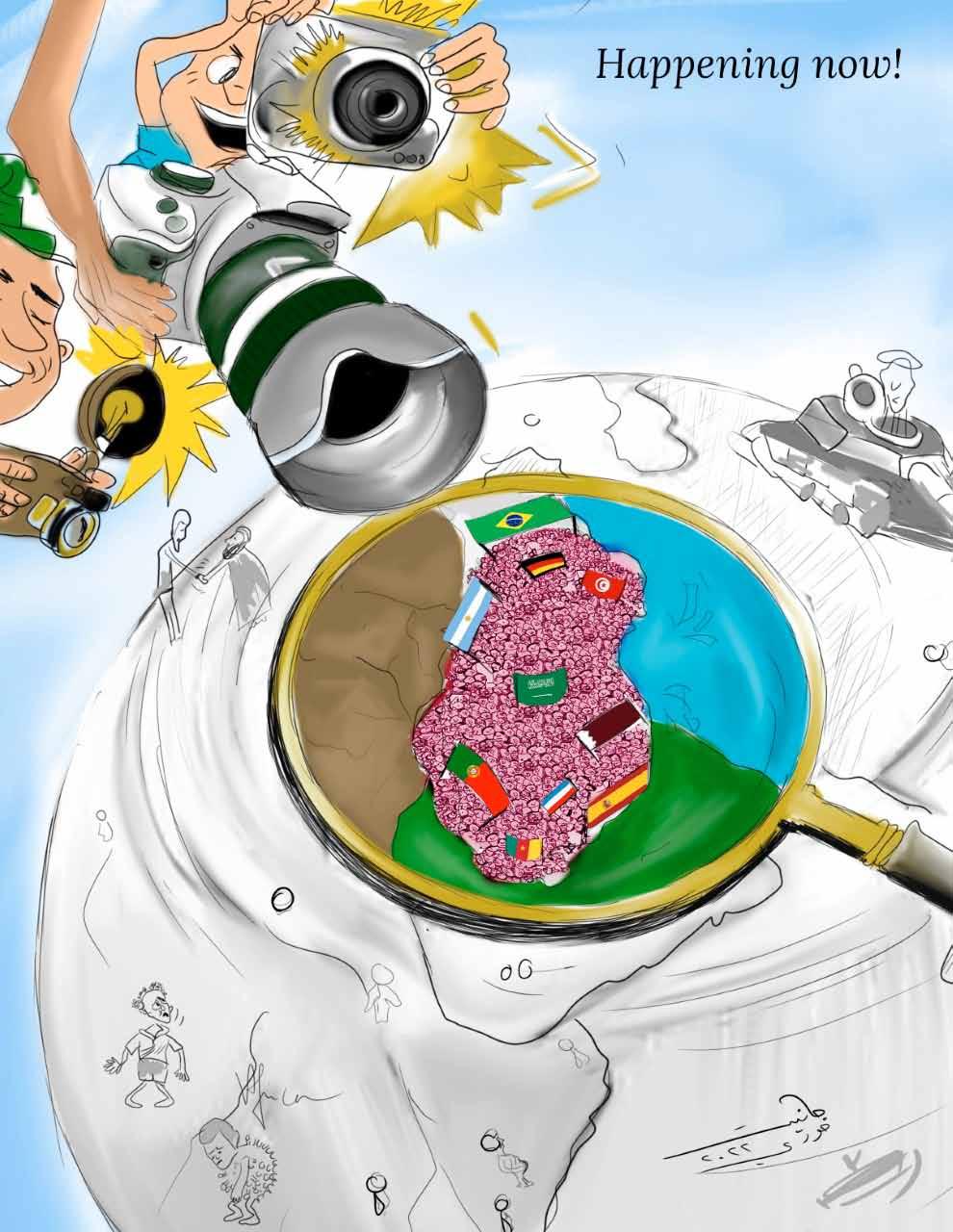
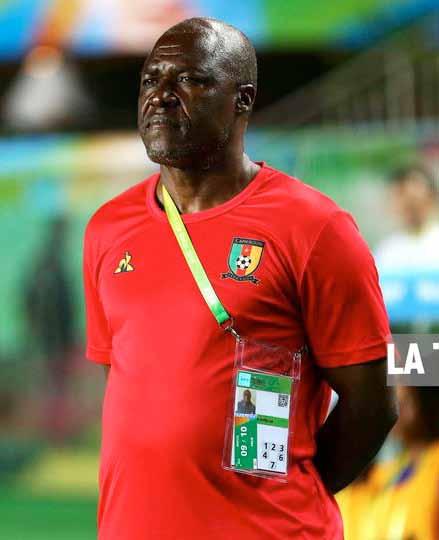






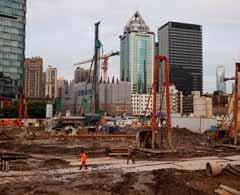





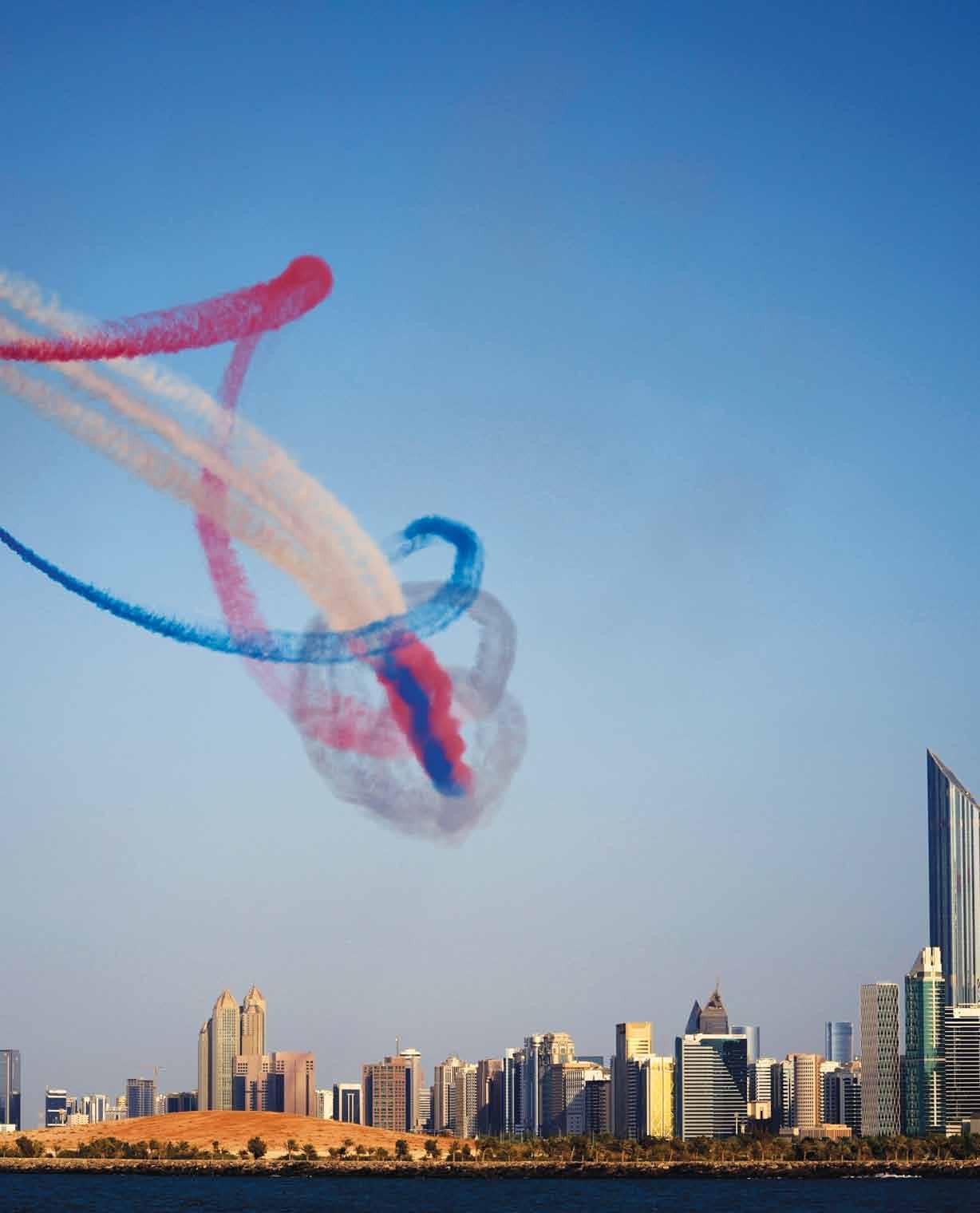

People look at a Mayan sculpture during the press preview of “Lives of the Gods: Divinity in Maya Art” at The Metropolitan Museum of Art in New York City on November 14, 2022. - The exhibition, which is set to open on November 21, 2022, features nearly 100 masterpieces, includ ing rare loans from Mexico and Guatemala that honor divine figures of the ancient Americas. / AFP
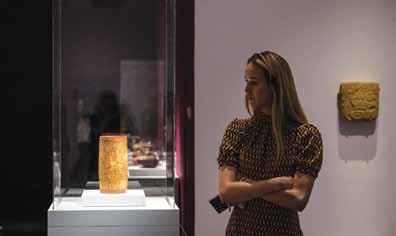

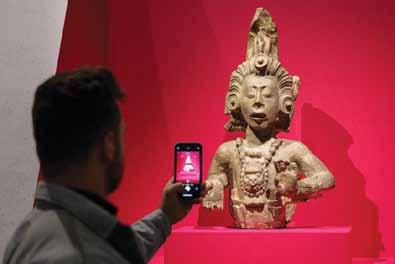


Countries were far from agreeing the contours of a climate deal at the COP27 summit in Egypt on Wednesday, with the host country urging negotiators to resolve their di erences ahead of a weekend deadline.
The outcome of the conference in Sharm el-Sheikh is a test of world resolve to tackle global warming as other crises, ranging from Russia's war in Ukraine to consumer in ation, distract international attention.
Leaders from the G20 group of developed nations issued a declaration on Wednesday expressing support for a global goal to limit warming to 1.5 degrees Celsius, phase out coal and speed up climate nance.


French oil giant Total said Tuesday it would soon launch exploration activities in search for gas in the Mediterranean Sea o Lebanon’s coast, following last month’s Lebanon-Israel deal on their maritime border. According to a statement, TotalEnergies and its partner, Italy’s ENI, signed with Israel a so-called “Framework Agreement” to implement the U.S.-mediated border agreement reached last month. Lebanon and Israel have been formally at war since Israel’s creation in 1948.

Saudi Aramco plans to invest petrochemicals
Korean a complex in The project, company's and will mark Aramco and chemicals from statement. The construction up to 3.2 million petrochemicals, completed
Aramco (2222.SE) said on Thursday it invest in a $7 billion project to produce petrochemicals from crude oil at its South liate S-Oil Corp's (010950.KS) re ning the port city of Ulsan. project, named Shaheen, is the Saudi biggest investment in South Korea mark the rst commercial use of and Lummus technology to produce from crude, Aramco said in a
construction of the complex, to produce million tonnes per year (tpy) of petrochemicals, will begin in 2023 and be by 2026, Aramco said.

A senior United Arab Emirates o cial called on Monday for "codi ed and unambivalent" commitments from the United States to its security, adding it had no interest in "choosing sides". The UAE and Saudi Arabia, wary of Iran's nuclear and missiles programmes, have been strengthening links with China, a major trade partner, and Russia, a fellow member of the OPEC+ oil alliance, while the UAE has also forged ties with Israel.

The late Iraqi leader Saddam Hussein’s great-nephew has no links with the Islamic State group but was sent back to Iraq as part of a political deal with Lebanese authorities, his lawyer said Sunday.
Bushra al-Khalil told The Associated Press that her client, Abdullah Yasser Sabaawi, was living in Yemen in June 2014, when IS ghters massacred hundreds of Iraqi troops in central Iraq. She said Lebanese authorities handed over Abdullah to Iraq on Friday despite the fact that he had been registered as a refugee in Lebanon and denies any link with the 2014 massacre.

An oil tanker associated with an Israeli billionaire has been struck by an Iranian bomb-carrying drone o the coast of Oman amid heightened tensions with Tehran, o cials said Wednesday. Meanwhile, Greece said Iran freed two Greek oil tankers held by Tehran since May.
The drone attack on the Liberian- agged oil tanker Paci c Zircon happened Tuesday night o the coast of Oman, the U.S. military’s Mideast-based Central Command said in a statement. It identi ed the drone used as an Iranian-made Shahed variant.
Republicans were projected to win a majority in the U.S. House of Representatives on Wednesday, setting the stage for two years of divided government as President Joe Biden's Democratic Party held control of the Senate. The victory gives Republicans the power to rein in Biden's agenda, as well as to launch potentially politically damaging probes of his administration and family, though it falls far short of the "red wave" the party had hoped for.
Mexican security and immigration authorities have stepped up patrols, highway checkpoints and raids in southern Mexico since the United States started expelling Venezuelan migrants last month.
The Mexican government has not said whether its enforcement actions near its border with Guatemala are related to the U.S. policy change, which e ectively shuts the door to Venezuelans trying to enter the U.S. through Mexico, but the e orts have put migrants in this southern city on edge.
Authorities have also been more active in breaking up small migrant caravans that try to advance north from Tapachula.
Turkey plans to pursue targets in northern Syria after it completes a cross-border operation against outlawed Kurdistan Workers Party (PKK) militants in Iraq, a senior o cial said on Tuesday, after a deadly weekend bomb in Istanbul. The government has blamed Kurdish militants for the blast on Istanbul's Istiklal Avenue on Sunday that killed six people and injured more than 80.
Sunday
President Volodymyr Zelenskyy triumphantly walked the streets of the newly liberated city of Kherson, hailing Russia’s withdrawal as the “beginning of the end of the war,” but also acknowledging the heavy price Ukrainian troops are paying in their grinding e ort to push back the invaders.
The retaking of Kherson was one of Ukraine’s biggest successes in the nearly 9-month-old war, dealing another stinging blow to the Kremlin. It could serve as a springboard for more advances into occupied territory.
President Joe Biden called it a “signi cant victory” for Ukraine.
India laid out on Monday the steps it will take to achieve net zero by 2070, releasing its Long-Term Low Emissions and Development Strategies (LT-LEDS) at the COP27 summit in Egypt.
Chinese authorities faced more public anger Thursday after a second child’s death was blamed on overzealous anti-virus enforcement, adding to frustration at controls that are con ning millions of people to their homes and sparked ghts with health workers.
The 4-month-old girl died after su ering vomiting and diarrhea while in quarantine at a hotel in the central city of Zhengzhou, according to news reports and social media posts. They said it took her father 11 hours to get help after emergency services balked at dealing with them and she nally was sent to a hospital 100 kilometers (60 miles) away.
The death came after the ruling Communist Party promised this month that people in quarantine wouldn’t be blocked from getting emergency help following an outcry over a 3-year-old boy’s death from carbon monoxide in the northwest.
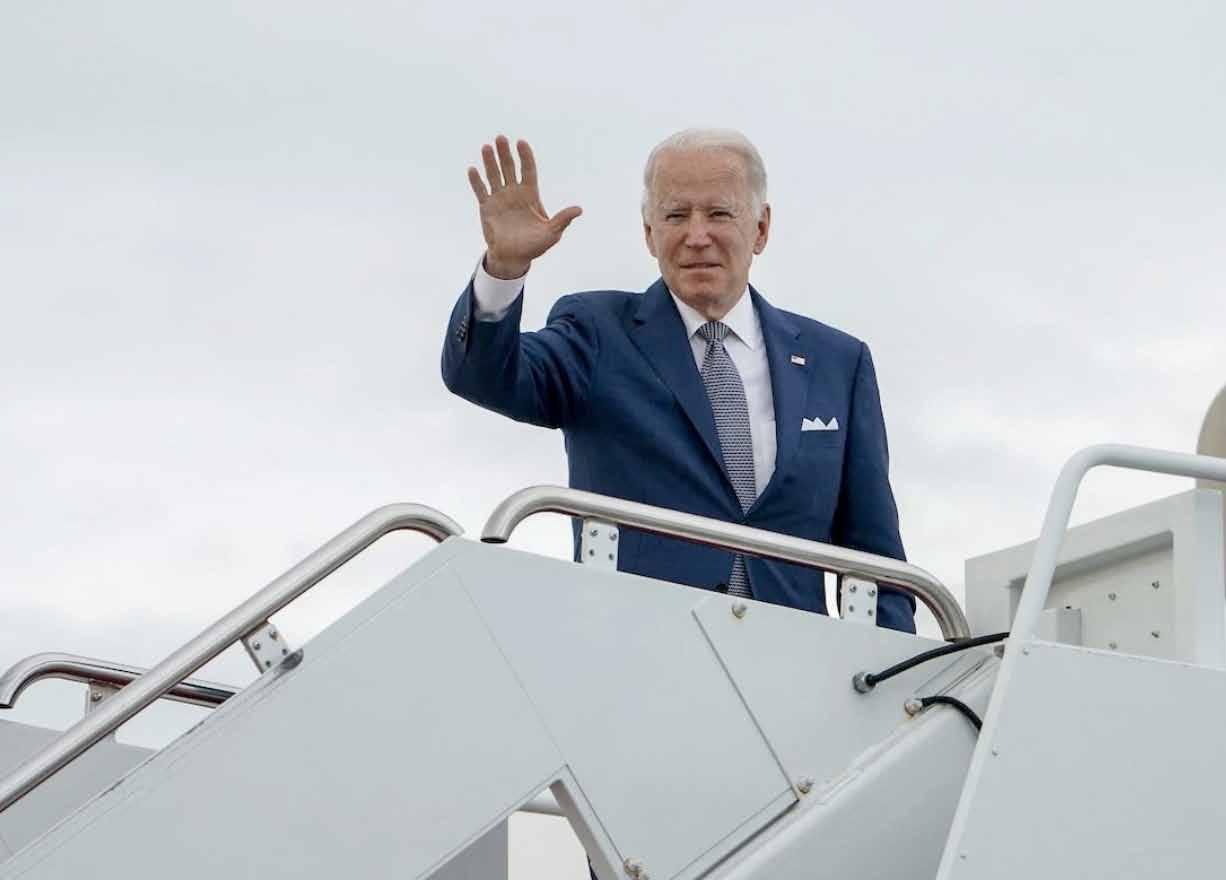
 By Dalia Ziada
By Dalia Ziada
Since before the congressional midterm elections in the United States, observers in the Middle East have been wondering about their influence on the future of the Biden administration’s foreign policy in the region. However, parallel to this, an equally important question should be asked about the po tential impact of the Middle East countries’ policies on the future of the U.S. administration of President Biden.
The latest vote count shows that the Repub licans are closer to taking over the House of Representatives from the Democrats, who have been leading it since 2019. Meanwhile, the Senate is expected to split between the two parties or, in the best-case scenario, fall into the lap of Democrats who could win with a slight majority. In the shadow of the extreme political polarization in which the United States has been drowning for five years, it is valid to predict that the Republi cans in Congress will be more hawkish, not on Russia or China, but on President Biden and his government.
Logically speaking, they should exert every effort possible to further lower Biden’s al ready declining approval ratings, in order to pave the way for their presidential can didate in the 2024 elections, whether they choose to nominate Trump or someone else. This week, former President Donald Trump officially announced his bid to lead the Re publicans in the coming presidential elec tions, building on the Republican comeback to controlling the lower house of the U.S. Congress. Meanwhile, Biden’s approval rat ing is declining and his administration’s re lationship with Middle Eastern allies is still relatively tense.

Biden has exerted a remarkable effort to ease tensions with allies in the Arab Gulf re gion by paying a visit to Saudi Arabia and Jerusalem in the summer. For the first time, President Biden clearly admitted that his initial policy “to pivot away from the Mid dle East had been a mistake.” He told the officials in Saudi Arabia that “as the world grows more competitive and the challenges we face more complex, it is only becoming clearer to me that – how closely interwoven America’s interests are with the successes of the Middle East. We will not walk away and leave a vacuum to be filled by China, Rus sia, or Iran. And we’ll seek to build on this moment with active, principled American leadership.”
However, it did not take too long for the ten sions to rise again when OPEC+ decided to
lower production volume in October.
Building on historical experience, some could claim that a Republican-led Congress should be more favorable to Arab Gulf countries in contrast to Biden’s administra tion. Most Arab Gulf countries, and Mid dle East countries in general, had a strong relationship with the Republican party and the Trump Administration. However, this is hardly going to be the case with the mem bers of Congress who will take the lead after the completion of midterm elections.
Looking closer at the fabric of the elected congressional legislators, we will discover that a record number of 82 Muslim candidates have been voted in, on both the red and the blue seats. That is good news for American democracy, but certainly a headache for the Middle East leaders. The aggressive stance of Muslim Congresswomen Ilhan Omar and Rashida Tlaib against Saudi Arabia and Isra el is still solid. Both of them kept their seats through the midterm elections. The current tensions between the Biden administration and the Saudi-led OPEC+ organization over the volume of oil production are creating a fertile ground for such congressional pres sures to grow and be more effective.
The Muslim representatives are also expect ed to give a hard time to Israel, especially in light of the re-election of Netanyahu as Prime Minister. Historically, Netanyahu had tensions with Democratic presidents com pared to his warm connections with the Re publican presidents. However, it would be
An important question should be asked about the potential impact of the Middle East countries’ policies on the future of the U.S. administration of President Biden.
unrealistic to expect that the newly voted congress, despite being led by a Republican majority, will be as supportive of Israel’s in terests as the previous ones.
One exception to that scenario is a strong congressional position against Iran. Most likely they will halt Biden’s talks with Teh ran over the nuclear deal and show stronger support for the waves of protests that have been sweeping the country for more than a month calling for the fall of the Mullah re gime. That will eventually serve the interests of the Arab Gulf countries and Israel, how ever indirectly.
United States foreign policy, in general, is one of the areas where the political conflict between the Democratic president and the Republican-majority House is going to be manifest. A Republican-led Congress has the power to obstruct the government’s activities abroad due to its control over foreign spending appropriations, which intersects with decisions related to the budget of the Pentagon and the State De partment, and the foreign aid or other con tributions they can offer to other countries. For example, Republican candidates have been talking about reviewing the size of U.S. military aid to Ukraine and the level of U.S. involvement in the war in Eastern Europe.
Such a review will not only affect the bal ance of power in the Russia-Ukraine war but will also have an indirect impact on coun tries in the Middle East. Important U.S. al lies, such as Egypt, are expected to be hurt in the process, mainly due to their vulnerable economic standing in face of the ongoing global economic crisis. A Republican Con gress may also question the annual military aid to Egypt and delay its payment. Yet,
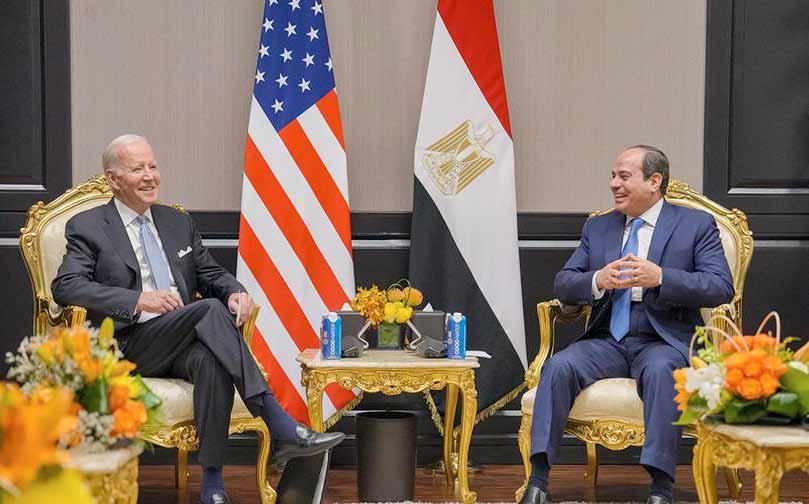
Biden has exerted a remarkable effort to ease tensions with allies in the Arab Gulf region by paying a visit to Saudi Arabia and Jerusalem in the summer.U.S. and Egyptian Presidents Joe Biden and Abdel Fattah El Sisi meet on the sidelines of COP27. WHITE HOUSE
they would not do this for reasons related to the Egyptian state’s performance on human rights issues, as the Democrats do.
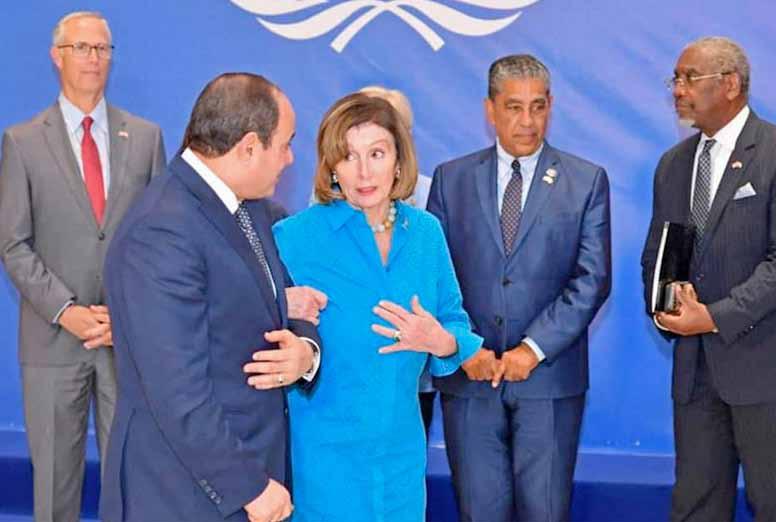
They will simply do it to disturb the newly found balance in the relationship between Biden’s administration and the Egyptian leadership of President El-Sisi. Before leaving office in December 2020, former President Trump, despite his friendly re lationship with the Egyptian President, from out of nowhere made a video state ment accusing Egypt of using the military aid money offered by the United States to purchase Russian-made weapons. Several Republicans applauded him for saying that. Obviously, Trump’s goal was mainly to make it more difficult for the Biden ad ministration to start on a good foot with Egypt.
In the past year, the Biden administration has been trying to find a point of balance in its relationship with Egypt, between pressur ing for human rights reforms and collaborat ing on solving regional strategic impasses.
That was clearly exhibited in the warm con
versations
U.S. House Speaker Pelosi down the aisle of the COP27 Summit created a posi tive roar on social and traditional media.
However, Pelosi will soon hand the gavel to the House Republican leader Kevin McCa rthy and Biden will become too busy with handling Republican pressures on his gov ernment, marking the beginning of a new era of two years or more, that may not be so favorable to most countries in the Mid dle East.
Egypt s President Abdel Fattah al-Sisi speaking with US House Speaker Nancy Pelosi at the COP27 conference in the Red Sea resort of Sharm el-Sheikh. (Photo by Egyptian Presidency / AFP) that President Biden and House Speaker Nancy Pelosi had with the Egyptian President in Sharm El-Sheikh last week. The photos of President El-Sisi laughing with US President Biden and walking arm-in-arm withFor the first time, President Biden clearly admitted that his initial policy “to pivot away from the Middle East had been a mistake.”
Having lost control of the Iranian street and failed over several months to regain it, Iran’s increasingly desper ate leaders are now firing judicial shots not just at old enemies but at new ones.
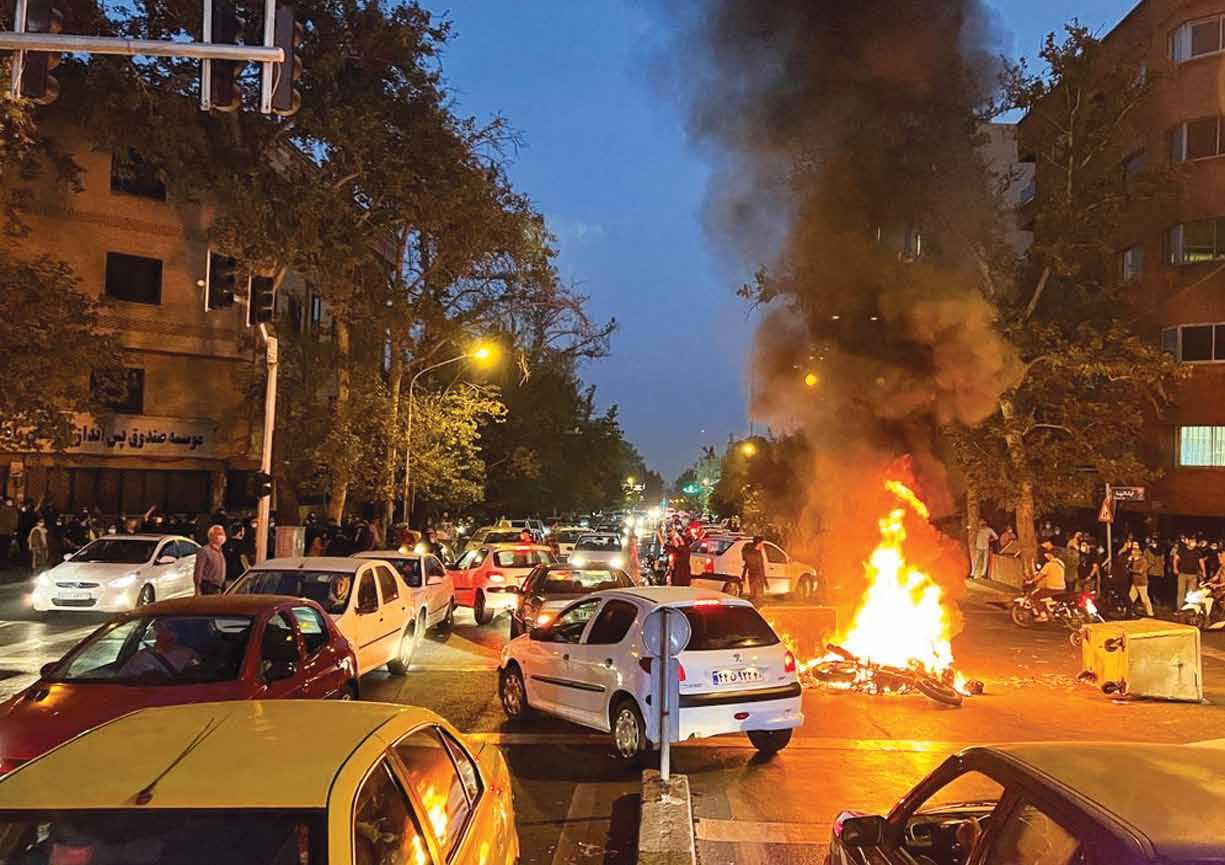
Of these newly perceived threats to the regime are jour nalists, particularly those whose work uncovers such state action as the killing by Iran’s morality police of a
22-year-old Kurdish Iranian woman who was not wear ing a headscarf in public. The death of Zhina Amini on 16 September might have gone unnoticed were it not for the work of two journalists who, as a result, are thought to be languishing in the notoriously harsh Evin prison.
The old perceived enemies of the Tehran regime include what it calls “the super spy services”, by which it means the CIA, Mossad, MI6, and others. Iran’s leaders claim these intelligence agencies have quietly facilitated the
mass protest movement that has, since Amini’s death, shaken the ruling elite to their core. Other traditional scapegoats of Iran’s mullahs and legislators include Sau di Arabia, Kurdish separatists, and exiled Iranians living abroad. But to this list, the regime now adds everyday Iranians reporting events on the ground.

Far from dying down, things are heating up. On 8 No vember, 227 Iranian parliamentarians – a sizeable major ity within a chamber of 290 – voted to allow the state to execute protesters. This, they said, would “serve as a hard lesson in the shortest possible time” to those dem onstrating against the abuse of state power. Killing those in detention may be seen as the authorities’ own escala tion, having been less-than-soft until now. To-date, al most 400 protesters have been killed in the police crack down, with thousands injured, and an estimated 20,000 arrested.
“Now the public, even protesters who are not supportive of riots, demand that the judiciary and security institu tions deal with the few people who have caused dis turbances in a firm, deterrent, and legal manner,” said Iranian government spokesman Masoud Setayeshi, ex plaining the latest vote. Indeed, the first trials have al ready taken place. Detained protesters and journalists have been charged with “corruption on earth”, “waging war on God”, and “enmity against God”, or with being foreign agents - all punishable by death under Iranian law.
Speaking to Majalla, Edib Khalidian from the Media Committee Journalism Desk of Kurdistan Freedom Party (PAK) described the charge as ludicrous.
“Iran is a theocratic, dictatorial, totalitarian, and occupy ing state,” said Khalidian. “It tries to link all subjects, all issues, to religion. Anything that threatens the jurispru dential state, the religious system, the leader of the Is lamic Republic, or any of its religious and governmental institutions, should be confronted. Anything that poses a threat to the regime’s survival gets labelled as a ‘hostil ity to God’, whether that’s national issues, human rights, women’s rights, freedom of expression, freedom of reli gion, or anything else that poses a threat to the system.”
According to Amnesty International, more than 60 Ira nian journalists have been arrested since the start of the unrest, but the true number is likely to be much higher, since many family members of missing journalists are afraid to speak out for fear that their son or daughter may
disappear forever. This does not surprise Khalidian. “At the beginning of the uprisings, journalists were priorities to be arrested in East Kurdistan. The number [of those arrested] keeps increasing.”
He shared a list of 33 journalists, together with their me dia outlets, whose fate is currently unknown. Two are the female journalists - Niloufar Hamedi and Elahe Mo hammadi - whose work alerted Iranians to the killing of Amini. Hamedi took a photo of Amini while lying in hospital in a coma, while Mohammadi covered her funeral ceremony in Saqqez. Together, their reporting showed Iranians how this young woman was arrested, beaten, and killed by state police. It triggered the first wave of protests, which soon spread.
To Iran’s leaders, journalists were now the source of ig nition, the primary threat. Hamedi was arrested on 22 September. Mohammadi was arrested a week later, on 29 September. Both are accused of being “primary sources of news for foreign media”. Hamedi was accused specifi cally of coercing Amini’s family to release information about their daughter’s death.
According to a statement from Iran’s Intelligence Minis try and the Intelligence Organization of Islamic Revolu tionary Guard Corps (IRGC), the two female journalists were on a mission called “Iran’s Destruction Project.” The agencies said that “using the cover of a journal ist, she [Hamedi] was one of the first people to arrive at the hospital, provoked the relatives of the deceased [Amini], and published targeted news”. Of Mohammadi, the IRGC and the Intelligence Ministry say she is a CIA agent. “She [Mohammadi] immediately attended the fu neral ceremony of [Amini] in her birthplace Saqqez to provoke her relatives by circulating the news and images
The panic comes from the remarkable strength and longevity shown by protesters, who are now entering their third month, and who have withstood every tactic in the Iranian police’s repression playbook.A police motorcycle burns during a protest over the death of Mahsa Amini, a woman who died after being arrested by the Islamic republic›s «morality police», in Tehran, Iran September 19, 2022. WANA (West Asia News Agency) via REUTERS
of the funeral ceremony and burial.”
Both the Intelligence Ministry and the IRGC blamed the CIA, Mossad, and other western intelligence agen cies for being behind the protests and accused the US of spending billions of dollars to find and connect Iranians to “Western networks under the cover of human rights activities and promotion of democracy”.
The threatening statement, issued last week, has sent shockwaves across all media outlets operating in Iran. Journalists now fear further repression in the coming
days. Majalla is in regular contact with journalists op erating in Baluchistan and Rojhelat, the Kurdish region, who shared their fears. One contact asked to be contact ed on an Iraqi number.
Hengaw Organisation for Human Rights told Majalla about Masoud Kurdpour, an experienced Kurdish jour nalist and former political prisoner who is the editor of the Mukrain News Agency. He is one of the many jour nalists who have disappearing without trace since his de tention at the start of the unrest, on 20 September.
For its part, the Tehran Journalists Association (TPJA) published a statement and sent a letter to the head of the Iranian judiciary, condemning the deliberate targeting of Hamedi and Mohammadi. In it, the TPJA said the joint statement from the country’s two main intelligence in stitutions about the analysis of recent events effectively meant “that journalism should be declared a crime and prohibited because the normal activity of two of our col leagues in performing their professional duties has been cited as an accusation that means the end of journalism”.
This followed a statement on 3 November from the In ternational Federation of Journalists (IFJ), whose gen eral-secretary Anthony Bellanger said: “We strongly condemn the unfounded accusations against our col leagues, who did nothing more than performing the most
A police motorcycle burns during a protest over the death of Mahsa Amini, a woman who died after being arrested by the Islamic republic›s «moral ity police», in Tehran, Iran September 19, 2022. WANA (West Asia News Agency) via REUTERS
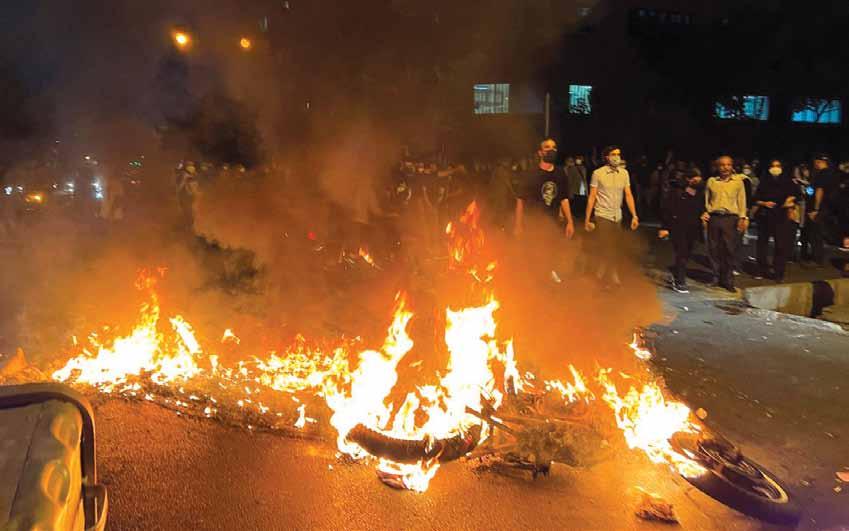
“Now the public, even protesters who are not supportive of riots, demand that the judiciary and security institutions deal with the few people who have caused disturbances in a firm, deterrent, and legal manner.”
September 2022 ,24 REUTERS/Clodagh Kilcoyne
basic principles of reporting: going to the scene of the event and informing the public about what happened.” He urged the Iranian authorities to drop the accusations against Hamedi and Mohammadi and release them from detention.
Unfortunately for journalism, the Iranian regime has not limited its threats to those operating inside Iran. The threat, as far as Iran’s leadership is concerned, is destabi lising in nature and global in scope. As if to demonstrate the point, Iran’s Intelligence Minister said: “We consider [UK-based] Iran International TV a terrorist organisa tion and we [will] prosecute its staff members. From now on, any affiliation with Iran International TV will be regarded as engagement in terrorist activities and a threat to Iran’s national security. We will never spon sor acts of terrorism and insecurity in other countries, as Britain does, but we won’t commit ourselves to counter ing insecurity in these countries. Britain will way for its actions aimed at making Iran insecure.”
The threats are being taken seriously. On 7 November, Volant, the London-based media company operating the Farsi-language Iran International TV, said two of its British-Iranian journalists had received “credible death threats from the IRGC”. The Metropolitan Police in Lon don has now warned journalists working at the channel and others that there is an imminent threat to their lives
and those of their families. Last week, The Telegraph reported that an Iranian hit squad was now operating in London, targeting Iranian journalists. The report cited “a hostile surveillance team” spotted outside the homes of reporters.
On 11 November, UK officials summoned Iran’s deputy ambassador to explain the threat made towards Iranian journalists living in the UK. Foreign Secretary James Cleverly described the journalists as being “subject to immediate threats to life from Iran,” adding: “We do not tolerate threats and intimidation from foreign nations to wards individuals living in the UK.”
Running alongside all this have been moves by the Euro pean Union to impose sanctions on a further 30 Iranian officials seen as being at the heart of the human rights

“At the beginning of the uprisings, journalists were priorities to be arrested in East Kurdistan. The number [of those arrested] keeps increasing.”
abuses in the country, but initial plans to designate the IRGC as a terrorist entity, as mooted by Germany, are unlikely to proceed.
Meanwhile, journalists are now scared to do their job. An Iran International spokesperson said: “Our journal ists are subject to abuse 24/7 on social media, but these threats to life of British-Iranian journalists working in the UK marks a significant and dangerous escalation of a state-sponsored campaign to intimidate Iranian journal ists working abroad.”
They added: “These lethal threats to British citizens on British soil come after several weeks of warnings from the IRGC and Iranian government about the work of a free and uncensored Farsi-language media working in
London. Britain is the home of free speech. Iran Interna tional stands as part of that tradition, proud to serve the 85 million people of Iran with independent, uncensored information.
“The Islamic Republic of Iran, and specifically the IRGC cannot be allowed to export their pernicious media crackdown to the UK. The IRGC cannot be allowed to act abroad with impunity. We hope that the UK Government, international governments, and other organisations will join us in condemning these horrific threats and continue to highlight the impor tance of media freedom. We would like to thank the Metropolitan Police for their considerable efforts in keeping journalists safe.”
Iran has long accused the UK of harbouring critical Ira nian journalists for the purpose of airing propaganda and lies about the regime. Early targets of intimation were journalists at the BBC’s Persian Service. Now those at Iran International TV, Manoto Channel, and Voice of America have been added to the list.
Due to the censorship imposed on local Iranian media, Iranians rely on satellite channels for unfiltered news. Knowing this, the regime regularly triggers internet shutdowns. According to a report published by Tansim
People take part in a protest in front of the Iranian Embassy in support of anti-regime protests in Iran following the death of Mahsa Amini, in Madrid, Spain September 2022 ,28.
REUTERS/Violeta Santos Moura

Volant said two of its BritishIranian journalists had received “credible death threats from IRGC”.
Media, an Iranian regime mouthpiece, “Iran sent the message because Iran knows the satellite news channel Iran International is funded by Saudi Arabia”.
Since the start of the unrest, Iran has threatened Saudi Arabia several times, suggesting not only physical at tacks against Saudi targets, possibly by one of Iran’s many proxies such as the Yemen-based Houthis or mi litias in Iraq, but non-physical retribution, such as by stirring up anti-Saudi feeling domestically, or by using media outlets to air inflammatory and propaganda re ports against the Kingdom.
This comes days after a video was released that showed a threatened attack by Iran’s Shahed-136 kamikaze drones on the Shaybah energy complex in Saudi Arabia. These are the same drones that Russia is currently using in Ukraine.
The IRGC head, Major-General Hossein Salami, said Iran had warned the Saudi government that media backed by the Kingdom is “provoking our youth with propaganda,” adding: “Be careful of your behaviour and control these media, otherwise, the smoke will be in your eyes. We will finish with you. You entered our internal affairs through these media but know that you are vulnerable.”
The inflammatory rhetoric, the threats to those at home and abroad, the bombing of Kurdish areas in Iraq, and the Tehran parliamentary vote to mete out death to protesters, all suggests that the Iranian authorities are increasingly concerned and increas ingly desperate. Bizarre charges (such as ‘corrupt ing the earth’ and ‘waging war on God’) that are now being made against journalists who are just doing their job should be seen as part of the same pattern.
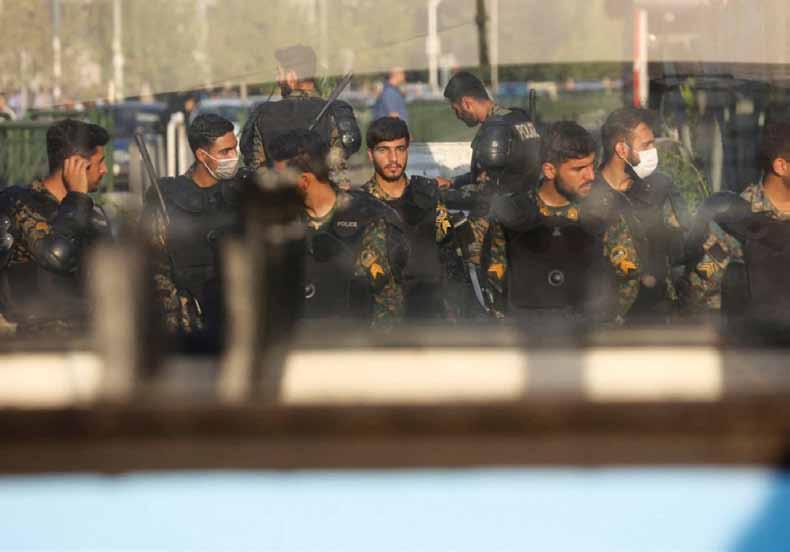
The panic comes from the remarkable strength and longevity shown by protesters, who are now en tering their third month, and who have withstood every tactic in the Iranian police’s repression play book. Their worry is justified. When the powerful head of the IRGC warns protesters “not to come to the streets” and is ignored, they have a major problem.
In a previous interview with Majalla, PAK spokes man Khalil Kani Sanani said: “Because every thing they have done to suppress the voice of the uprising people has not succeeded, yes, the dem onstrations continue and so too do the regime’s systematic crimes.” This begs the question: what comes next?
“I am in limbo. Why marry and have kids if they grow up and leave me with their mother at this age? My two sons have left Syria after our town, Kassab, located northwest of Syria on the boarders with Turkey, was attacked by Jihadists in 2014. One of them lives in London and the other lives in Yerevan, the capital of Armenia,” said Nishan, a Kassab-based Syrian Armenian, who works in tourism sector in the town that is famous for its mild climate and lush green mountains that meet the crystal clear blue waters of the Mediterranean.
Kassab, whose name is derived from the Latin words “Casa Bella” (beautiful house), is home to a vast majority of Syrian Armenians, who are Christians belonging to the Orthodox, Catholic and Protestant churches, with a very small Muslim minority.

The presence of Armenians in the Levant had preceded the appearance of Christianity. According to multiple historical sources, Armenians appeared in the Greater Syrian lands in the 1st century BC during the reign of the powerful Armenian emperor Tigranes the Great (140BC- 55 BC).
After the Syrian Crisis of 2011, the number of Syrian Armenians had decreased dramatically from around
100,000 to less than 30,000. Their grandparents are survivors of two ethnic cleansing tragedies: the Adana Massacre (1909) and the Armenian Genocide (1915). Many fled to the Fertile Crescent and Egypt, seeking refuge and peace. The current population in Kassab are survivors of a painful terrorist attack that took place in
2014, bringing down the number of Syrian Armenians from 8,500 to around 1,500
Let’s have a quick view at the Syrian Armenian’s lives, identity and participation in the Syrian political, economic and social scene.
Syrian Armenians are concentrated in the Syrian capital, Damascus, and the economic and industrial capital, Aleppo. However, they exist in small numbers throughout Syrian cities.
On the issue of double identity, Syrian Armenian political and social expert, Magi Assadourian, said: “I am Syrian Armenian; I mean I belong to the Syrian state and of Armenian origin. I was born in Damascus and I grew up, studied and worked in it. I want to die and be buried here in Damascus. As for my Armenian roots, I am proud of them. This double identity, both Syrian and Armenian, has enriched my personality and my thinking big time.”
Assadourian had developed a knowledge of the Syrian Armenian families when she worked in the Armenian Catholic Diocese in Damascus for 3 years as the Archdiocese Secretary.
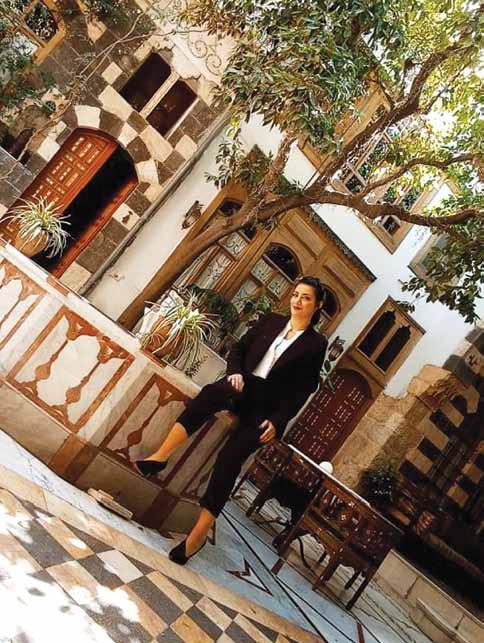
“Through my work, I got to know most of the Armenian families in Damascus, in particular, and Syria, in general,” she told Majalla English.
“Syrian Armenians who enroll in a Syrian public or private school can speak Arabic fluently. Even church schools that I visited in Kassab teach Arabic as part of the curriculum. That’s why it is hard, most of the time, to recognize Syrian Armenians unless they tell you.”
“The Armenian presence in Syria is an integral part of the national unity. We were and will remain closely aligned with our Syrian brothers and offer our greatest educational and cultural qualifications to support our beloved country, Syria,” Assadourian added.
The Armenian churches in the government controlled areas function as usual with the masses, Sunday sermons and prayers being held with full freedom. The majority of Syrian Armenians belong to the Armenian Orthodox church. Catholic and Evangelical churches exist in all cities and towns throughout Syria that have a Syrian Armenian population.
“The Armenians are a minority in Syria. They are free to practice their beliefs and their feasts, but they have
Kassab, whose name is derived from the Latin words “Casa Bella” (beautiful house), is home to a vast majority of Syrian Armenians, who are Christians belonging to the Orthodox, Catholic and Protestant churches, with a very small Muslim minority.Magi Assadourian
integrated into the Syrian society through their various jobs and professions,” said Assadourian.
Nishan, the tourism expert I met in Kassab, took me to visit three churches that belong to the three different sects.
Syrian Armenians have been represented in the national legislative bodies since the 1920’s. Currently, there are two members in the Syrian Council of People (parliament). Throughout modern Syrian political history, Syrian Armenians have had one parliament
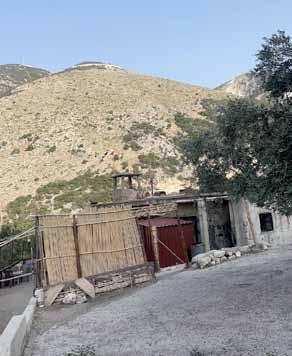
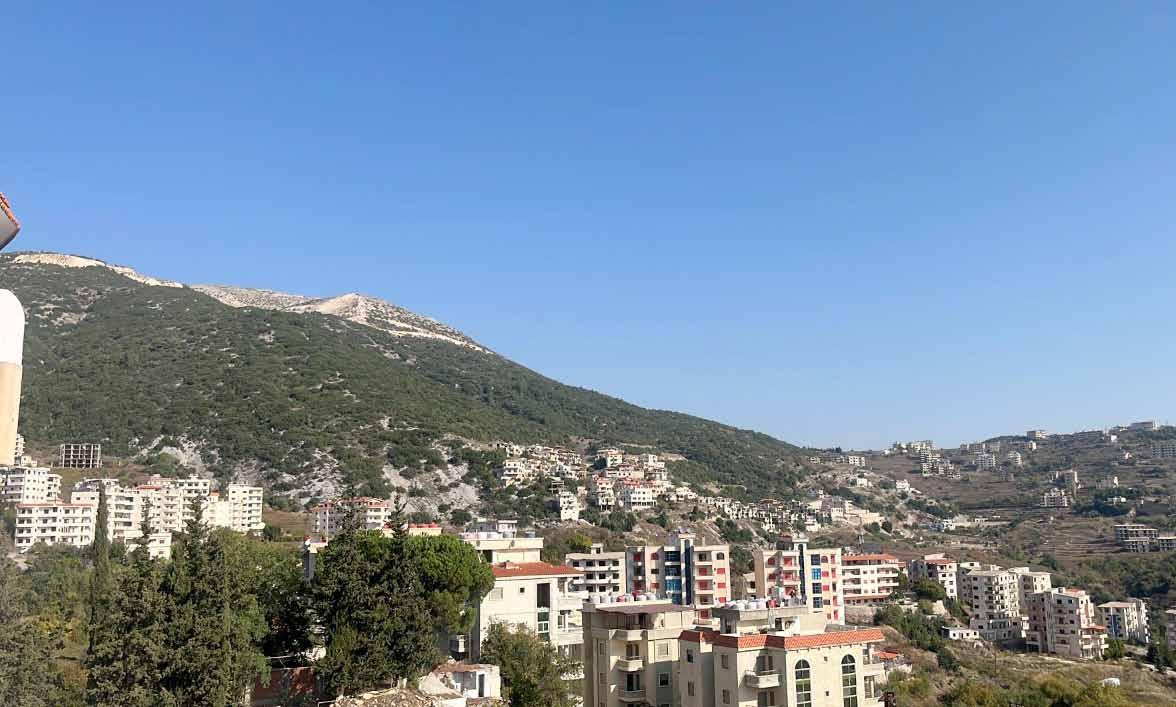
member
Currently Rep. Nora Mar Arressian (Damascus) and Rep. Gebraer Ronissian (Aleppo) are representatives in the Council of People for the period 2020 to 2024 Syrian Armenian parliament members are non-partisan. They run as independent members. However, the Armenian Revolutionary Federation
The Armenian churches in the government-controlled areas function as usual with the masses, Sunday sermons and prayers being held with full freedom.The Syrian Town of Kasab Syrian-Turkish border cross point where both Syrian and Turkish flags appear on the two sides
(Tashnaq), Social Democratic Hunchakian Party (Hunshaq) and the Armenian Democratic Liberal Party (Ramgavar) are Pan-Armenian parties that operate inside Armenia and among the Armenian diaspora. They do not operate politically but instead as cultural organizations.
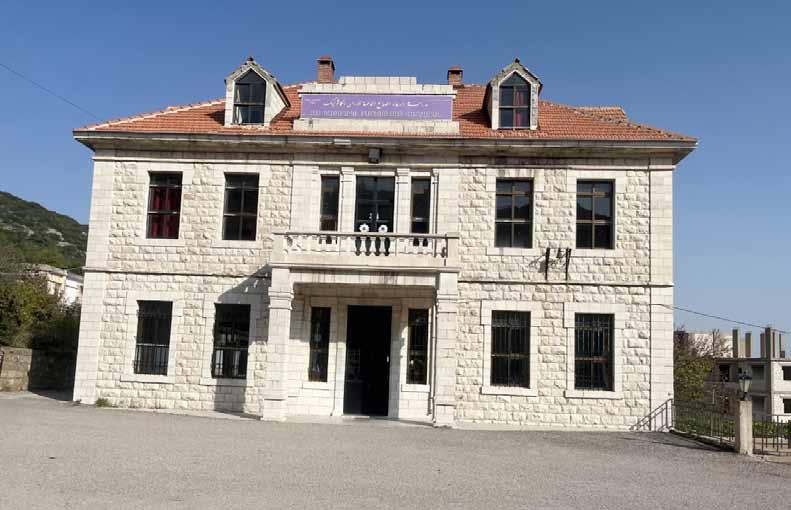
“It is true that Syrian Armenians do not participate in Syrian politics to a large extent, but they strongly condemned the terrorist acts and colonialism, especially the Zionist aggression against Palestine,” commented Assadourian on the nature of political involvement of Syrian Armenians in the local Syrian politics.
It is good to note that the Syrian Council of People has recognized the Armenian Genocide which was committed by the Ottomans in 1915. Syrian Armenian parliament members have pushed in this direction for years. Now, Syria is the second Arab country to recognize the genocide in which 1.5 million (approx.) people were massacred.
“It is one of the most sophisticated and educated communities in Syria. Syrian Armenians have modernized and automated industry in Aleppo. They are specialized in sophisticated industries and have the best craftsmen in the whole Syrian Arab Republic,” said Mojahed Abannasr, a Syrian observer living in Aleppo.
Syrian Armenians have close relations with the Armenian diaspora in the neighboring Arab countries and across the world. Each and every family has relatives in Armenia and abroad.
“The relationship between the Syrian Armenians and the Armenians of the diaspora has always been strong because we are a minority, and we have tried our best to preserve our identity and origins throughout history by supporting each other in Armenia and abroad,” Assadourian explains as being the reasons for strong connections with the diaspora.
According to various estimates, the Armenian diaspora population is around 6 million with only half that number living in the homeland, Armenia.
“I hope my family members and neighbors come back to Syria very soon,” concluded Nishan.
Syrian Armenians have close relations with the Armenian diaspora in the neighboring Arab countries and across the world.The Armenian Catholic School in Kasab
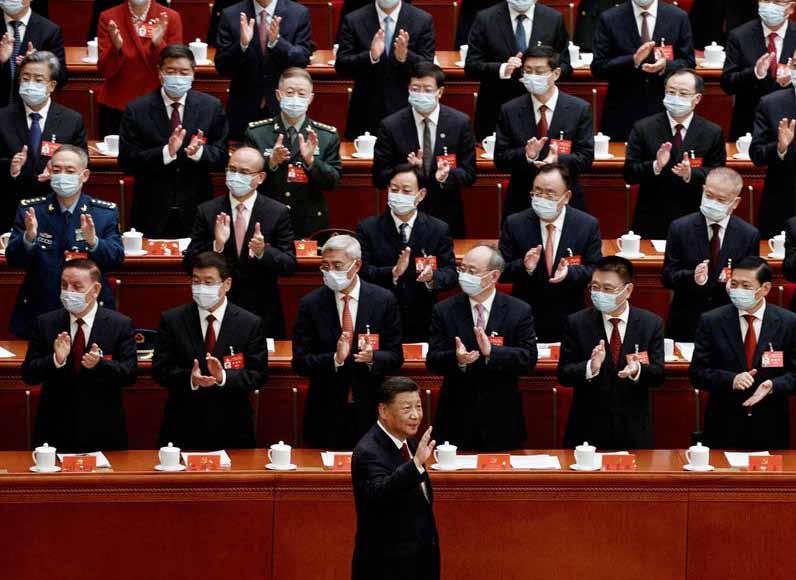 By Christopher K. Johnson
By Christopher K. Johnson
At a time of growing tension between Beijing and Wash ington, China’s 20th Party Congress in October unset tled many outside observers. During the proceedings, not only did Chinese President Xi Jinping stack China’s all-important Politburo Standing Committee with loy alists and secure a third term in office; he also painted
his darkest picture yet of China’s external threats. Xi called for further increasing the quantity and quality of China’s already accelerating defense production. And he appointed a mix of protégés and skilled technocrats to the full Politburo to oversee China’s response to the challenge.
So far, Beijing has withheld escalatory responses that would amount to direct economic warfare against the United States, such as disrupting crucial supply chains
REUTERS/Thomas Peter/File Photo
of rare-earth metals or using untested Chinese regula tory tools such as its “Unreliable Entity List” and the Anti–Foreign Sanctions Law, which could penalize foreign companies simply for complying with U.S. regulations. But to many analysts, Xi’s recent moves are a sign of worse to come. Now that Xi is firmly ensconced in his third term, some China observers ar gue that he could move to retake Taiwan in the next few years, provoking a full-fledged war between the world’s two most powerful states. But the new Politburo is not a war cabinet. Although there is no question that China’s leadership has grown more prickly and assertive, predictions in the wake of the congress that Beijing could soon launch a mili tary provocation or that Xi will dramatically rein in free-market capitalism in favor of a return to stat ism are wrong. For all their loyalty to Xi, the party’s new leaders are mostly measured technocrats. Xi has certainly added many close allies, but they also have strong connections to China’s private economy and are unlikely to be pure sycophants. Rather than plan ning for an aggressive, closed, and highly personalis tic China, the United States should expect Beijing to continue to govern in a stable and predictable manner, if only because China is facing major challenges that make the Politburo crave stability.
The 20th Party Congress is not the first time Xi has spoken about the world in a menacing tone. In May 2019, U.S. talks with China over President Donald Trump’s tariffs collapsed in Washington. Shortly af ter, Xi traveled to Jiangxi Province on a visit full of symbolism: Jiangxi was the launch pad for the Chi nese Communist Party’s fabled Long March in 1934, when CCP forces successfully retreated from advanc ing Chinese nationalists, regrouped, and then won. “We are now embarking on a new Long March,” Xi said to a cheering crowd at the Long March memorial site, “and we must start all over again.” He doubled down in a Politburo meeting a year later, declaring that China was fighting a “protracted war” against the United States, in a throwback to On Protracted War, Mao Zedong’s 1938 book about defeating a superior foreign enemy.
Yet Xi did not completely upend Chinese doctrine on those occasions. In each instance, he held fast to the judgment that stability and economic growth contin ued to be the dominant global trends. By declaring
that “peace and development remain the themes of the era,” he parroted a phrase first coined by Deng Xiaop ing—the father of China’s post-Mao reforms. He also said China was enjoying “a period of strategic oppor tunity”: an axiom introduced by Jiang Zemin, Deng’s successor and another market-oriented reformist. The idea underlying both concepts is that China enjoys a benign, perhaps even welcoming, global geopolitical climate. This assessment forestalled Chinese military adventurism aimed at reshaping East Asia’s balance of power and instead incentivized the country’s poli cymakers to focus on economic growth. Both phrases appeared again in critical CCP documents from April and June 2022, reaffirming their canonical standing in party dogma. That continuity, however, did not stop Xi from chang ing Chinese foreign policy. Already in November 2014, he gave a speech in which he effectively broke with Deng’s injunction that China should keep a low international profile, even though Xi’s immediate predecessor—Hu Jintao—had offered a full-throated defense of that approach just a few years earlier. In deed, Xi made it clear that he had little regard for most of his various predecessors’ decisions. In a party resolution passed in November 2021, Xi condemned the rampant corruption and ideological laxity under their rule, and he put his own ideological contribu tion on par with Mao’s while downgrading Deng’s. This boosting of Xi’s own thoughts at the expense of his predecessors’ continued in the run-up to the party congress. In July 2022, a prominent party theoretician penned an article in the CCP’s flagship People’s Dai ly extolling Mao’s and Xi’s theoretical achievements while making no mention of Deng, Jiang, or Hu. This diminution campaign cleared the way for Xi to finally excise both phrases—“peace and develop ment” and “strategic opportunity”—from his political report to the 20th Party Congress. It is unclear exactly why they were removed, but the West’s galvanized response to Russia’s invasion of Ukraine and the Po

Xi’s all-loyalist Politburo is not designed for near-term conflict with Taiwan (or any other state) but rather to “harden” China’s system in case war becomes unavoidable.Chinese President Xi Jinping waves as he arrives for the opening ceremony of the 20th National Congress of the Communist Party of China, at the Great Hall of the People in Beijing, China October 2022 ,16.
litburo’s conclusion that the Biden administration is at least as aggressive toward China as the Trump admin istration was probably made a difference. These two factors are also part of the reason why Xi has made multiple references to “the spirit of struggle,” a de liberate callback to Maoist rhetoric used when China faced both a hostile West after the Korean War and an antagonistic Moscow after the Sino-Soviet split. Al though language about peace, development, and stra tegic opportunities all appear in the political report, the terms are used in isolation and counterbalanced with references to “risks,” “challenges,” and “hegem onic bullying.” Xi almost directly attacked the United
States for its tariffs and criticisms, saying China op poses “building walls and fortifications,” “decoupling and breaking links,” and “unilateral sanctions and ex treme pressure.”
So far, the main policy implication of Xi’s stiff lan guage has been a campaign to build domestic industri al strength. At the congress, Xi sketched out his plans to create a “fortress economy” that is self-sufficient in food, energy, and core technologies, such as semi conductors and advanced manufacturing. Xi also said he hopes to build supply chains that are safer from Washington’s interference. He seems similarly com mitted to increasing China’s military strength abroad and the regime’s security at home. In the 20th Party Congress report, his “comprehensive national security concept” had its own standalone section, and men tions of “national security” were up 60 percent over the last report, in 2017. Xi also subtly declared that China must improve its “strategic deterrence”: a likely nod to China’s August 2021 test of a hypersonic glide vehicle—and an indication that China will substan tially expand its nuclear force.
Economic development retained its spot as China’s “top priority” in the report. But Xi’s new admonition to “ensure both development and security” puts secu rity on nearly equal footing, potentially creating more friction with Washington. Xi’s proclaimed desire to
CPC Central Commit tee General Secretary Xi Jinping, Communist Party of China (CPC) Guangdong Province Party Chief Li Xi, CPC Beijing Municipal Committee Secretary Cai Qi, CPC Central Com mittee secretary for party discipline Zhao Leji (L-R) attend the first plenary meeting of the new 20th Central Committee of Chinese Communist Party elected at the 20th National Congress, at the Great Hall of the People in Tiananmen Square. Photo by Artyom Ivanov/TASS/ABACA PRESS.COM
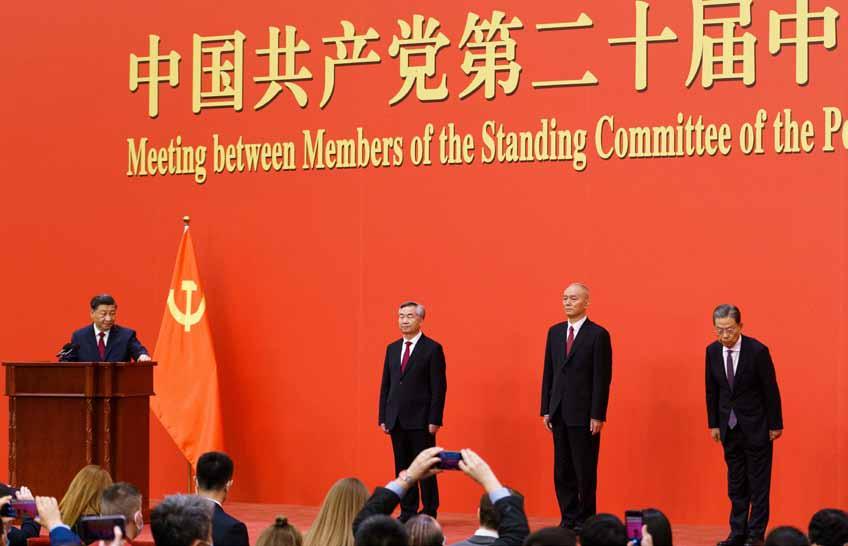
Xi’s new admonition to “ensure both development and security” puts security on nearly equal footing with economy, potentially creating more friction with Washington.
U.S. President Joe Biden, right, and China’s President Xi Jinping shake hands as they meet on the sidelines of the G20 Summit in Nusa Dua on the Indonesian resort island of Bali on Nov. ,14 2022. (Saul Loeb/AFP via Getty Images/TNS)

promote a unique “Chinese-style of modernization” for developing countries might spark fears that Chi na’s amorphous Global Development and Global Se curity Initiatives are in fact nefarious joint campaigns to directly challenge the Western international order. Equating development and security could also height en U.S. concerns about “civil-military fusion” in China’s economy—fears that have already prompted U.S. President Joe Biden to implement a virtual ban on exporting high-end semiconductors to China. If Xi merges departments focused on development and na tional security at China’s next legislative session—or creates a new structure to improve coordination and cooperation between them—an increase in ChineseU.S. tensions would become virtually certain.
In many ways, Xi’s new leadership team matches his protectionist and militaristic language. Several of the new Politburo members are techno-nationalists with expertise in important state-led scientific endeavors that have advanced China’s industrial prowess; they include a nuclear engineer, an expert in material sci ences, and four officials with experience in Chinese defense firms. In the security realm, Chen Wenqing is the first former head of China’s civilian foreign intel
ligence arm to sit on the Politburo. He is joined on the CCP Secretariat—the Politburo’s executive body—by both China’s top cop and a career police officer turned party disciplinarian, creating the largest contingent of security officials on the Secretariat in recent memory. Xi’s new chief uniformed officer and his presump tive next defense minister have both overseen weap ons development, highlighting the CCP’s emphasis on continually upgrading China’s capabilities. Xi’s revamped high command also has two officers who saw action in China’s border wars with Vietnam and a third who served extensively in Chinese army units near Taiwan.
Given these appointments, it is understandable why many analysts believe China is preparing to upend the liberal order—perhaps even through violence. Major news outlets across the globe said Xi’s new lineup,
Xi held fast to the judgment that stability and economic growth continued to be the dominant global trends.
especially in the military, proves he is itching for war. But such narratives are overhyped. Xi’s all-loyalist Politburo is not designed for near-term conflict with Taiwan (or any other state) but rather to “harden” China’s system in case war becomes unavoidable. Xi kept an aging top general on the Politburo, for ex ample, because he is a fellow CCP blue blood who can be trusted to enforce Xi’s political grip on the military, not because he fought in China’s disastrous war with Vietnam 40 years ago. Likewise, Xi pro moted defense specialists to the Politburo because they achieved previously unattainable technological breakthroughs, such as landing rovers on the moon, rather than for their weapons-making prowess. And despite the new language, Xi’s work report still bal anced calls for a “fortress economy” with language supporting markets, suggesting he will govern with a precautionary approach instead of marching to war. The idea that Xi’s new economic team is an incom petent and sycophantic group of statists, also popu lar among China observers, is similarly off base. The officials’ career paths alone belie that caricature. China’s next premier, Li Qiang, has led all three of China’s top east coast economies and maintains good relations with private-sector entrepreneurs. His stew ardship of the wrenching Shanghai lockdown raised reasonable questions about whether loyally following Xi will outweigh his pro-market instincts, but that is nothing new for China: outgoing Premier Li Keqiang, an unquestioned reformist, earned a similar black mark for toeing the party line amid controversies ear
lier in his career. Li Qiang’s likely economic depu ty—Ding Xuexiang—is more of a cipher, but he hails from the financial capital of Shanghai and will be at tuned to the markets. As Xi’s longtime chief of staff, Ding knows how to please his boss, but he is also experienced at operating China’s government to ad dress various problems. Finally, He Lifeng—assumed to be the economy’s new operational manager—has substantial experience in several of China’s marketdriven special economic zones. The Biden administration will need to understand that China’s new leaders are not just warmongering stat ists if it wants to successfully handle an unbound Xi. Right now, however, it may not. On Taiwan, the ad ministration has touted an ever-shrinking timeline for possible Chinese military action, and it has alleged that the Chinese government is impatient about retak ing the island. This messaging may be deliberately alarmist—part of an attempt to tell Beijing that the United States is ready and watching, thereby deterring an attack. But it could create a self-fulfilling prophecy if the resulting support to Taipei hollows out Wash ington’s official “one China” policy—which recog nizes the Chinese position that Taiwan is a part of China and that the mainland is the sole legal govern ment of China—and in turn crosses Beijing’s funda mental redline. Biden officials are more circumspect in describing Xi’s new economic team, but their fram ing of the Chinese-U.S. rivalry as a competition of economic and governance systems implies that they expect China’s model will ultimately fail—a perspec tive that earns them few friends in Beijing. That is not to say Xi’s approach and his new team are the right choices for China or that they will inevitably succeed. And regardless, Biden must understand that Xi’s power equals that of Mao—except during a time when China is far more economically powerful and globally consequential. China’s president is a ruthless and tenacious leader, full of ambitions that will not be subordinated by norms: something the reformist Hu Jintao’s embarrassing and forced exit from the con gress meeting clearly illustrated. By appointing a mix of loyal protégés and accomplished technocrats to the Politburo, Xi has also made it clear that he is a man in a hurry, pursuing fast results. He could act rashly and catch Washington off guard.
In this photo provided by China’s Xinhua News Agency, a People’s Liberation Army member looks through binoculars during military exercises as Taiwan’s frigate Lan Yang is seen at the rear on Aug. 2022 ,5. (Lin Jian/Xinhua via AP)

Several of the new Politburo members are technonationalists with expertise in important state-led scientific endeavors that have advanced China’s industrial prowess.
But that does not mean Xi is itching for a fight. In fact, Xi’s very sense that China faces substantial challenges may encourage him to lower bilateral tensions. Ding, a leading Politburo member, unwit tingly hinted as much in a lengthy early November article in the People’s Daily, where he forcefully catalogued China’s many challenges and arduous tasks over the next five years (and beyond) and of fered a controversial Mao formulation as the right response. It was, after all, Mao who first lowered tensions with Washington in order to more easily achieve many of his objectives. Xi is not looking for a rapprochement, but he might like some breathing room. Early rumblings that Biden and Xi could hold a lengthy meeting with the trappings of traditional modern summits, where both sides use the gather ing to announce commercial deals and other deliver
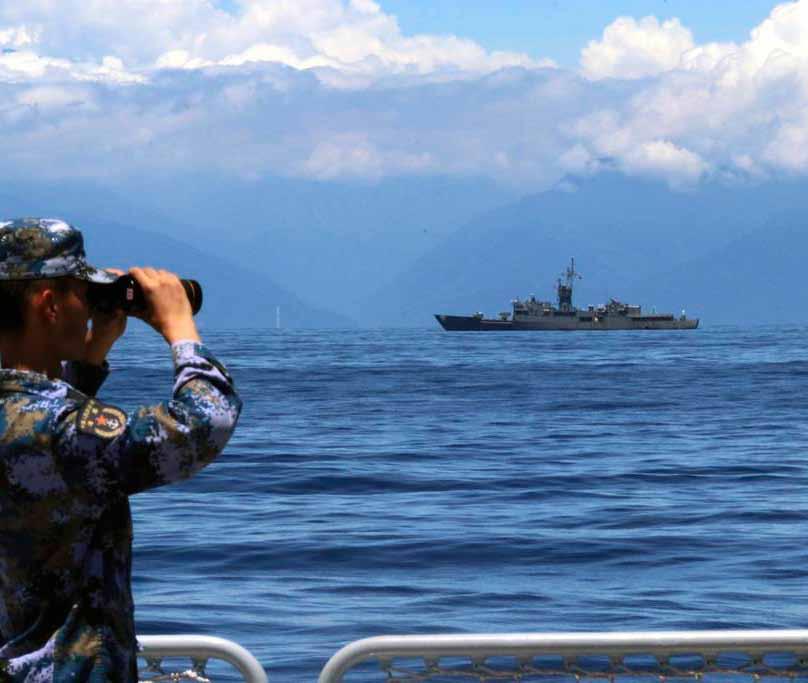
able results, certainly suggested as much. The real question is whether Biden wants to—or can—seize Beijing’s apparent interest in a détente to pump the brakes on the relationship’s downward spiral.
This article was originally published by Foreign Affairs.
The Biden administration will need to understand that China’s new leaders are not just warmongering statists if it wants to successfully handle an unbound Xi.
Over the past half century, Asia has developed extremely rapidly. Presently, growth is decelerating; Chinese growth, once in double digits, is struggling to reach 4 percent. This could, of course, be a blip in an inexorable upward trajectory, but it could be the first signs that something deeper is amiss. In our just published
book, “The Connections World: The Future of Modern Asia” (Cambridge University Press, 2022), we argue that Asia is in indeed facing a watershed moment. We propose a route out of the shallows but show that it requires some difficult policy decisions. Asia’s development model has differed fundamentally from that taken in earlier times by today’s advanced economies. Two of the most important differences have been the major role played

Workers labour at a con struction site in Shanghai, China July 12, 2021. Pic ture taken July 12, 2021.
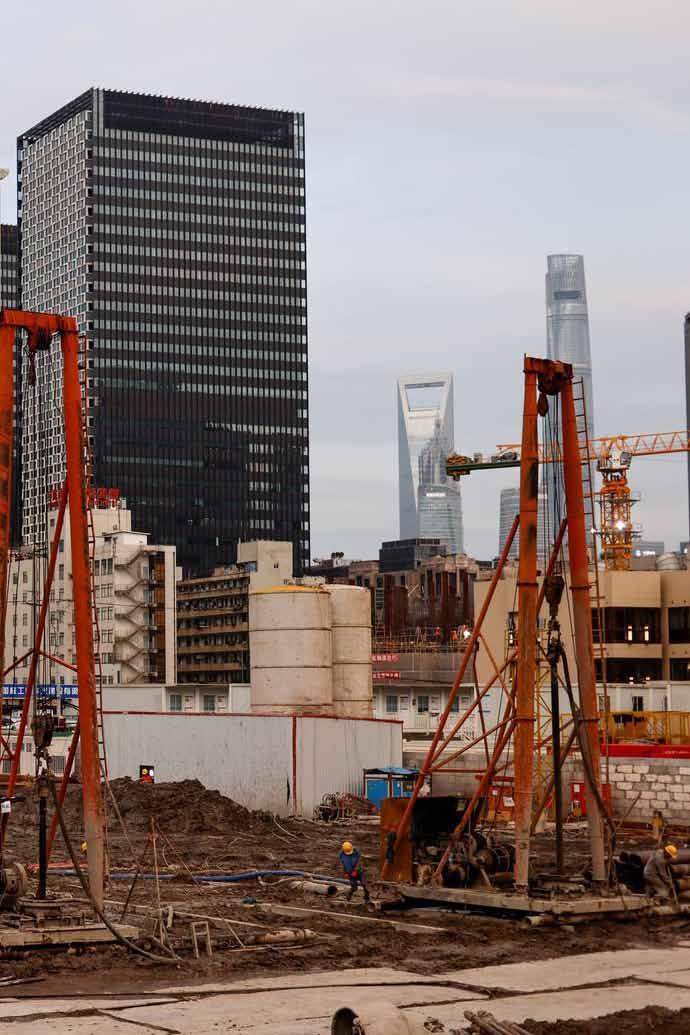
by state industrial policy in orchestrating growth and the reliance on a particular form of corporate structure: the business group. These have allowed Asian economies to concentrate resources on priority areas and have facilitated rapid development.
This model of Asian development is built on pervasive and enduring networks of connections that tie together businesses and politicians. We term this the “Connections World.” At the apex of the system sit politicians and their parties along with these largely family-owned – and often dynastic – business groups. Business groups look to politicians to protect them from competitors as well as provide them with cheap loans, subsidies, and public sector contracts. Politicians look to these groups to support stateled initiatives and provide jobs, especially in politically sensitive regions, as well as for themselves and their families. The relationships between politics and business are thus highly transactional, often with a strong element
of reciprocity about them.
Business groups are a format ideally suited to the Connections World. From the politicians’ point of view, business groups provide concentrated points of contact and so reduce complexity in policymaking. It is much easier to guide the economy if a significant share of the economy is controlled by a small number of companies.
The business groups in turn are organized in ways that allow their owners to shift resources around the group, often using transfer pricing or inter-group loans. At the same time, their economic firepower in multiple sectors allow business groups to dominate the numerous markets in which they operate. Our analysis shows that while in the United States, the revenues of the five largest firms amount to no more than 3 percent of the country’s GDP, in China and India, it accounts for 11 percent. This sort of concentration is common throughout Asia.
Perhaps most worryingly, by operating in many markets simultaneously, their scale relative to the economy allows business groups to entrench their market power – not least by leveraging their connections to politicians. This is happening in both Asia’s democracies and autocracies. In probably the most striking case, Samsung, the group recently accounted for 21 percent of South Korean GDP. And even when parts of this world fall out of favor or falter commercially, other connected companies enter.
Among the consequences of the Connections World, the concentration of wealth is particularly striking. In particular, the owners of business groups in emerging Asia have seen an extravagant increase in their wealth over the past 20 years, with the number of billionaires in the continent ballooning from 47 in 2000 to 719 in 2020
For instance, the number of billionaires in China went from zero in 2002 to 42 in 2008 to 389 in 2020. Their median wealth also grew from 1.5$ to 2.1$ billion between 2008 2020. In India, the number went from nine to 102 between 2000 and 2020. In a far smaller economy, South Korea, the number of billionaires has also jumped from one in 2000 to 28 in 2020. And increases have occurred right throughout Asia. In China, it seems that this explosion of
Asia’s development model has differed fundamentally from that taken in earlier times by today’s advanced economies.
wealth is now viewed by President Xi Jinping as a potential threat to the political stability of the regime.
The Connections World has thus supported Asia’s extraordinary growth. But problems are mounting. On one plane, Asia’s demographics are increasingly challenging a growth model that has been based primarily on concentrating resources. At the same time, the attenuation of competition that comes with having privileged business groups at its core holds back productivity growth as well as limiting the number of high-quality jobs. Perhaps most significant is the way in which the Connections World stands in the way of Asia shifting to greater reliance on innovation. The politician-business nexus also impedes improvement in institutions and sustains the sort of venal and undesirable relationships that have been exposed in Sri Lanka’s recent meltdown.
In sum, the Connections World is turning from being a driver to a potential drag on Asian growth and development. Even so, it clearly will not disappear of its own accord because all the important players in the game gain from its continuation. It is the rest of the economy – businesses and entrepreneurs unable to compete with business groups, workers unable to get good jobs, and those excluded from income and wealth – who stand to gain from change.
Shifting the balance will require the adoption of policies that will accelerate the disappearance or, more likely, transformation of business groups as well as limiting the discretionary scope for politicians to leverage their business connections. We can learn from how the United States under President Franklin Roosevelt addressed similar problem of business group entrenchment in the 1930s by prohibiting pyramids and related party transactions while enhancing protection of minority shareholders. The impact was augmented by the implementation of strict competition policy including explicitly targeting business groups. Political change must start from greater transparency and the strengthening of civil society, including the application of asset and interest declarations for politicians with more stringent penalties for breaches.
To be very clear: Asia’s further climb up the income ladder has nothing automatic about it. Indeed, a failure to come to grips with the Connections World will impair the brightness of its future.
This article was originally published by The Diplomat.

Our analysis shows that while in the United States, the revenues of the five largest firms amount to no more than 3 percent of the country’s GDP, in China and India, it accounts for 11 percent.People visit a main shopping area in Shanghai, China July 12, 2021. REUTERS/ Aly Song

The 2020’s killing of Black George Floyd in Minnesota by the knee of a White policeman flared a nation-wide – as well as world-wide –activism about the relation between Blacks and Whites, and encouraged many Blacks – also some Whites – to speak out about race and racism.
For about a year now, this Black activism involved books (a few of them were reviewed in this column), but this last one is peculiar because it is a personal story, and not an academic or historical research or analysis.
This book raised a few sensitive questions: Are Black Americans obsessed with the color of their skin? Moreover, are they emotionally clinging to slavery, which was a long time ago?
On the other side, are Whites insensitive to Blacks complaints? Are the Whites taking for granted their overwhelming historical, economic and political and cultural powers?
These questions might reflect the roots of the Black-White conflict in America today. While the first group has been leaning more towards emotional complaints (granted as being supported by facts), the second group has been more rational (scientific?) in explaining the socio-economic realities of the relations.
Blacks make up 12 percent of the population but are nevertheless ten percent of the economy, 20 percent of poverty, 40 percent of child poverty, and twice as unemployed than Whites.
The author of this book grew up in an overwhelmingly White community, and lived years of being exposed to White culture, such as movies, television, magazines and the Internet.
She and her younger sister played, as she wrote, “tennis, soccer, softball, and basketball; danced ballet, tap, jazz, and hip-hop; did gymnastics, figure skating, and horseback riding; and played piano and violin, respectively.”
To be included, mostly during her teen years, she wrote that she had to “shrink my identity into that box, setting increasingly poisonous goals.” She mentioned “painful and damaging chemical hair treatments;” depriving herself of food so as to stay skinny; and bought “the most unimpeachable and impeccable fashion clothes.”
She wrote that in school she was told to play the role of Scary Spice (the only Black Spice Girl) and that she discovered her classmates’ racist attitudes.
However, on the part of her Black people, she was criticized for her tendency to act White, which deprived her from leaning back into her racial group.
Book Review: “Token Black Girl”: “Token Black Girl”
Author: Danielle Prescod
Publisher: Little, New York Paper pages: 251
Price: Paper: $17.99. Electronic: $15.44
Finding a little respite in the Black community, she wrote: “If and when I got the opportunity to meet other Black kids, they usually made it clear that they did not like me.”
She also wrote: “I am conscious of the ways that my behaviors and attitudes could have been interpreted as, well, stuck up. And, because I was so partial to whiteness, I adopted behavior, language, and mannerisms that operationally supported white supremacy.”
Caught between Blacks and Whites, she added: “I became manipulative, calculating, and mean. I was desperate to gain some modicum of control, and to do that, I constantly doled out criticisms, gossiped, and stirred up petty drama. I developed a haughty affect that I employed for both passing judgment and my own protection.”
The author, all along, seems to have become a prisoner of her skin color.
She wrote: “I remember that the reality of Blackness settled onto me like a terminal illness ... I desperately wondered how I could get rid of it so I could just be like everyone else. It distressed me that I would never be ‘cured’ of it and could never escape it.”
Despite all of this, she succeeded on her own in a media and show-business career, and worked
her way up the ladder. She also wrote that she “looked great.”
So, what is her problem?
She wrote about “enduring hurtful questions during interviews and everyday work environments.” Questions like: “What was it like to drive here from the ghetto?” and “Are your parents on welfare?”
She wrote that, despite her professional success in the fashion industry, her ambition and selfhatred morphed into «debilitating depression and an eating disorder».
She wrote that she was very conscious that she was often one of the few people of color in her department. And she repeatedly wrote that she “endured racial slights and erasure.”
Finally, and still in her thirties, she decided to write a book. And she wrote that “after decades of burying my emotions, resentment, and true self, I decided to confront the factors that motivated my self-destructive behaviors’
In an interview by a Black radio station after the publication of her book, she was asked: «What do you want Black women to leave with after reading your memoir?»
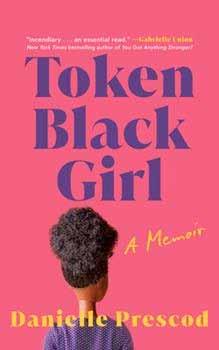
She answered: “I want them to understand that the pressure they’re putting on themselves all comes from the same place. It›s all in response to white supremacy.”
She seems very much obsessed with her skin color -- and others’ skin colors.
But, she confessed, she didn’t have a way out. She said, during the radio interview: “What should we be? What are we supposed to be? Who we are is totally acceptable as Black women. Just because we are Black does not mean we’re a monolith or that we fit into one box”.
Blacks make up 12 percent of the population but are nevertheless ten percent of the economy, 20 percent of poverty, 40 percent of child poverty, and twice as unemployed than Whites.Book Cover
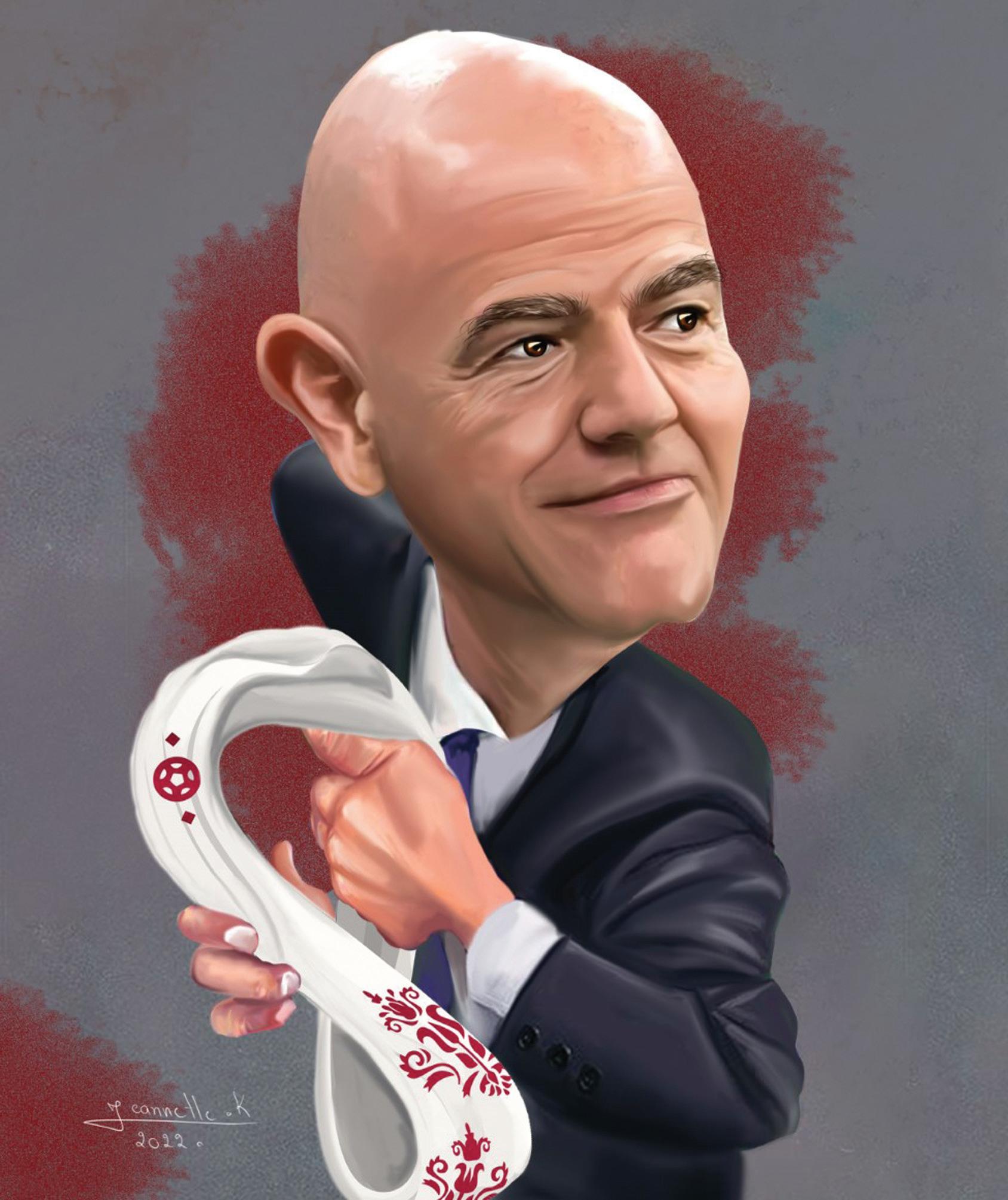

The current 44th edition of Cairo Interna tional Film Festival (CIFF) honored the unique filmmaker, Béla Tarr. He might not be as famous as the Russian Tarkovsky, the Swedish Bergman, or the French JeanLuc Godard, but he is definitely creative and distinguished from the mainstream.

The Hungarian Béla Tarr exhibits an in genious style in showcasing his stories which mostly revolve around the human influence on society and society’s influ ence on people, including topics of cultur al, economic and even military invasion. Celebrated by CIFF, it is time to highlight some of Tarr’s movies, two of which are screened by the festival: The Turin Horse and Werkmeister Harmonies, in addition to a seminar in which Tarr spoke about his works, philosophy and how it is distin guished from other styles.
The problem was that the seminar was held before screening the films, so the audience was not able to relate the information and opinions expressed by the Hungarian film maker to his work.
Béla Tarr was born in Pécs, Hungary, in 1955. He graduated from the Theatre Academy in 1981. After one short film, he directed his first long movie Family Nest
in 1979. His next movie was The Outsider (1981) adapted from Albert Camus’s nov el. Then he filmed his version of Macbeth for the Hungarian TV, before returning back to cinema in 1982 to make The Pre fab People.
All these movies were just a debut for his journey towards the groundbreaking work
in Hungarian cinema which promoted him to a much higher rank. In 1994 (after few years of absence), Tarr created his epic movie Satantango which was screened in the Toronto Film Festival in the same year. The 439-minute film in black and white was seen by 70 viewers, ten of whom watched it to the end, because some critics
had to watch other movies or didn’t admire his style.
I was one of those ten who stayed and was amazed by the contemplative cinema that belongs to Tarkovsky, Aleksandr Sokurov and Theo Angelopoulos. It was another slow-pacing-and-long-takes movie, but it excelled for its unique style, as with Tarr’s subsequent works.
In the film, Tarr features a desolate village whose residents have mostly left, except for a pub in which psychologically and physically aging characters dance as they can’t find any other place to go. A drunken doctor stayed there while two men were followed by the director as they walk for a long distance in the rain while windows of houses on both sides of the street are closed.

“Why are all village windows closed?” I asked him at that time.
“If I opened them, I would have to speak about every person inside,” he replied. His reply was odd enough to think about, and the only way to understand it was to link the scene to being a part of a movie about unity among the remaining people in the village.
When I met the filmmaker here in Cairo, I reminded him of that conversation. He laughed and said, “I remember that ques tion, because you are the only one who asked about it. I still adhere to my an swer.”
“How do you see the film now?” I asked. He replied, “My opinion is not neutral. Every movie I made is a result of huge efforts in writing and implementing, so I can’t say I prefer a scene to another, or a film to another. All my films are the fruit of my intellectual process and a huge ef fort I exert on paper and on the set.”
Before he left for the seminar, I asked him another question, “Do you approve if I called you ‘a cinema poet’?”
“Definitely,” he replied, “although I didn’t intend to be a poet. I just present parts of life that are really interesting to me. Poetry
comes in the form of the visual images and their connotations, and is also fused in the long takes. My films are elegies of circum stances, and might present bleak approach es. But I can’t communicate happiness that I can’t find around me.”
In the beginning of Satantango, a herd of cattle enters the small village which is the setting of most events. The camera follows the slow movement of the herd in a track ing shot. Although an old worn wall stands in the middle of the path so we can’t see the herd’s movement, the camera goes on to track the herd at the other end of the wall after a minute or more. This leaves us in a worn place. There is also a swamp on
a road full of holes and what seems to be the ruins of a building, along with a bark ing dog, mysterious growling, and sounds of a far train.
The film’s exposition is not the only ex traordinary part, the intentional slow pace is also beautiful. It is unique for its indi cation of the pace of life in a Hungarian village in a special moment of its history. This moment can’t be reflected at any oth er pace. The village is dead even before the movie starts and before we know that one of the remaining residents is a drunken doctor who takes the responsibility of re cording what happened before and after the village’s desolation.
It is an exposition haunted by the gloomy spirit of the place, particularly by the growling sound that replaced the sound track, and by the still camera which re frains from any movement that would shake the dismal silence.
The story is narrated at the same pace that lends the movie a brilliant artistic unity. It is about a man who introduces himself to the village residents as their savior from poverty, need, and dysfunction of the unnamed communist era. But this man, Irimiás (accompanied by Petrina) is only a manipulator who steals the residents’ money. One reading of the film is based
The two Béla Tarr films screened at CIFF 44 are of the same caliber in terms of creativity and the ability to mix dark reality in the manner of special existential poetry
on a suggestive comparison between Irimiás and the Christ, as Irimiás returns from death with a promise of a pros perous life which will not be fulfilled, namely, capitalism.
The melancholic poetry about nature and man flows and is repeated in the scene of the drunken fat doctor. He falls to the ground, and the camera is above him to make you feel he drops dead. After a minute or two, he strives to get up, car ries a barrel and leaves his house to fill it with wine. The camera follows him as in a poetic elegy. The whole movie commu nicates this concept and treatment.
Misery is a recurring theme in the films of Hungarian director Béla Tarr. It is not the subject that most people want to see, but it is the subject that concerns a few directors around the world who are distinguished primarily by their desire not to share their whims, desires, thinking, and the colors

of their lives with the majority of people. They are as lonely as their characters, and so is Béla Tarr.
It is not necessary to select scenes from his films that depict images of misery, but it is sufficient to mention these films. Every film he made and cared about is a
reflection of the people’s misery in his world. The challenge is how this bleak subject would arouse the interest of in tellectuals and critics all over the world. Why do we find a clear artistic motivation in these films? Why does his work not fall into the melodramatic category of other cinemas?
The answer to these questions is that Béla Tarr does not make up what he presents. To do so, he must first be a storyteller, but Tarr’s films are not made to tell stories, but rather to explore the general social envi ronment and the personal clash between one situation and another – between old and new, or stability and change.
Even in the film Satantango, the few events do not constitute a narrative theme, but rather remain part of the work that is life. So it is part of an observed life that does not provide stories in the way we are ac customed to seeing them. It can take years for a story to unfold if its events end at a certain point.
Tarr’s very long film Satantango lingers as if you saw it yesterday, with its long scenes and extended experiences that leave you wondering when it will end
Watching Tarr’s work, one discovers that the world depicted by this director is the film itself. This world may be the house, the village or town, or (usually) any se cluded location, but it is the entire world for his characters who know nothing but their immediate surroundings.

As a result, one believes everything the director presents, and believes the misty sky while it rains, the cold as it pinches the bodies, and the characters who are in need and suffering as a consequence. The viewers can believe the film with all its viewpoints whether they agree or disagree with some of them.
Béla Tarr’s film is an opinion, a vision, and a director’s philosophy. Thanks to the treatment, the viewer respects what he sees and interprets as long as they accept the technical conditions imposed by the direc tor, viz., an extremely monotonous cin ematography, a slow pace, limited move ment, and spaced-out events. His films are not aesthetic-decorative (either in mental or visual perception), and they have been described as “not beautiful” by some in Hungary. He was dubbed “a director of
ugliness” after only three films in the early 1980s.

However, this is only a small part of a larger picture. There is the method used by the director in his work. Those long shots make it appear as if the film didn’t undergo the editing process, and filming from afar maintains a distance that he, as a director,
should not cross towards his characters. This is what creates the schism between the director and the film as a narrative medium. If this gap had not existed, there would have been no need to pre sent films in this style, and films would have transformed from being an art to study into a story to watch, as Tarr told me in 2001.
Any Béla Tarr film slaps the viewer with scenes that are difficult to forget. In fact, his very long film Satantango lingers as if you saw it yesterday, with its long scenes and extended experiences that leave you wondering when it will end and move on to another experience with his penetrat ing shots that frame the environment on the screen. Thus he keeps the ambience under the spotlight and as the vast space in which objects and characters interact. The director is apparently afraid (or per haps realizes) that getting too close to his characters will force the viewer to ignore the setting. As a result, he only takes close-up shots when necessary, es pecially in cases that show the full extent of the misery.
The two Béla Tarr films screened at CIFF 44 are of the same caliber in terms of crea tivity and the ability to mix dark reality in the manner of special existential poetry, they are absolutely no less than Satan tango.
Béla Tarr, now in his late sixties, is con tent with the few films he has made. He announced his departure from directing to teach cinema and give lectures wherever he is invited.
Before leaving, I asked him if he, like any director who abandons his passion for directing, regrets it or would return. He replied, “I do not think so, because film making requires effort that I can no longer bear. Of course, I could have made more films than I have [eight] if I had agreed to do films that don’t address concerning top ics nor have a distinct style, but I do not regret it. Rather, I am pleased that with my few films, I have satisfied both myself and my audience. This is sufficient for me.”
◆
◆
◆
Directed by: Ryan Coogler Genre: Comics [US]Leading Roles: Letitia Wright, Danai Gurira, Angela Bassett
◆
Directed
By Mohammed Rouda by: Ameen Nayfeh◆ Genre: Drama [Jordan, Palestine]
◆
Leading Roles: Ali Suliman, Gassan Abbas, Ghassan Ashkar

This is the sequel to 2018›s Black Panther, which was also a huge success. Similarly, the new film is distin guished by large and artistic production designs that combine the motifs of African art with the nature of life in the fictional country of Wakanda. What the two films don›t have in common is the pres ence of Chadwick Boseman, who died a little more than a year and a half ago and starred in the previous film. Angela Bassett, Lupita Nyong›o, Letitia Wright, Dominique Thorne, and Shawn Roberts all have promi nent roles in the film.
It is a film starring women, but this does not compensate for the luster that the late actor brought to the first film. The film blends suspense with appropriate storytelling. The movie’s length and the large number of events may cause the viewer to lose track of who’s who in the film.
The husband, who lives in East Jerusalem, is only 200 meters away from his wife and children in occupied Jerusalem.
He and his wife communicate via phone and balconies. When his young son is hit by a car, he attempts to cross the Israeli checkpoint, but he lacks a permit, forcing him to ride in a car driven by someone who knows how to sneak through the checkpoint.
Ameen Nayfeh is producing a film aimed at Western audiences, insofar as the movie is being shown in New York, Los Angeles and other cities in the United States. The film is concerned with only the difficulty and limi tation of movement available to Palestinians before be coming preoccupied with secondary threads. The con
cept is sound, and the execution is well directed and filmed, but the script is far too long.
◆ Directed by: Chuck Russell
◆ Genre: Action [US]
◆
Leading Roles: Bruce Willis, John Travolta, Stephen Dorff
Chuck Russell has previously made good films (such as The Mask, Eraser, and A Nightmare on Elm Street 3: Dream Warriors), but this one falls short.
◆
◆
◆
Directed by: Clay Kaytis
Genre: Drama [US]
Leading Roles: Peter Billingsley, Julie Hagerty, R.D. Robb
After Bruce Willis announced his retirement earlier this year, one wonders how many films remain in his portfolio that have yet to be seen. In any case, this is one of them, and he reunites with John Travolta for the first time. Both of them are stars who lost the first row twenty years ago (for the record). It›s a detective story with the usual amount of action.
Willis is a former bounty hunter who is called back to work when one of his two friends is threatened. The acting is reminiscent of Travolta and Bruce Willis in other films. Stephen Dorff is the least well-known of the bunch but is the best character/actor. Director

There is nothing wrong with the title except for the re peated use of the word «Christmas.» But there›s some thing wrong with making the film exciting for the audi ence.
The film comes 39 years after the previous film, which was released in 1983. There is a long time between that film and this one, but the story here does not advance the history of the previous film›s events, but rather goes back in time.
Ralphie, the film›s hero, returns with his family be cause his mother is ill. This reveals hidden problems and unresolved issues that the head of the family is at tempting to address.
The film assigns another task to its hero, Peter Billings ley, which is to find a publisher for his first novel, so the visit gives him a reason to relax after failing in his literary ambition. Acceptable as an anecdote, which is far superior to movies that treat Christmas as a way to make quick money.

The African teams qualified for the 2022 World Cup are preparing to enter the arena of matches, hoping to pull off a surprise this time, because the conditions will be favorable. In addition to the advancement of their levels and their success in persuading some international stars to repre sent them, their ambitions have recently emerged through statements made by coaches and players.

The World Cup is magical, and its allure is heightened by the fact that it only happens every four years. Teams with a good reputation can en ter the tournament and then fail to advance, as Spain did in 2014. Unknown players emerge as stars on the world stage — think Thomas Mül ler in 2010. We can’t help but be drawn into the story of an underdog nation as their team makes inroads into the competition at every World Cup. Cameroon was that team at the 1990.
No team has surpassed the Central Africans’ per formance in Italy, where they reached the quar terfinals and were seven minutes away from the final four. Their adventure came to an end in Na ples, when England came back from two goals
down to win in extra time and set up a semifinal meeting with eventual winners Germany.
Cameroonian football legend and FIFA World Cup Qatar 2022 ambassador Samuel Eto’o went far in his expectations of his country’s perfor mance in the upcoming tournament, stressing that
Cameroon team picture during the 2021 Africa Cup of Nations AFCON Finals football Cameroon and Ethiopia at Olembe Stadium in Yaounde, Cameroon, on 13 January 2022. (Photo by Muzi Ntombela/Sports Inc via CFP).
the Untamed Lions will write history and make glory, becoming the first African team to win the World Cup title.
Eto’o’s optimistic predictions included -- all five African teams competing in the World Cup, where he expected Morocco to qualify for the final to face Cameroon, all African teams to reach the round of 16, and Cameroon, Morocco, and Sen egal to top their groups.
Cameroon, on the other hand, hopes to make amends for losing the last African Cup of Na tions at home in front of its fans. Cameroon has qualified for the World Cup the most times, seven times, in 1982, 1990, 1994, 1998, 2002, 2010, and 2014.
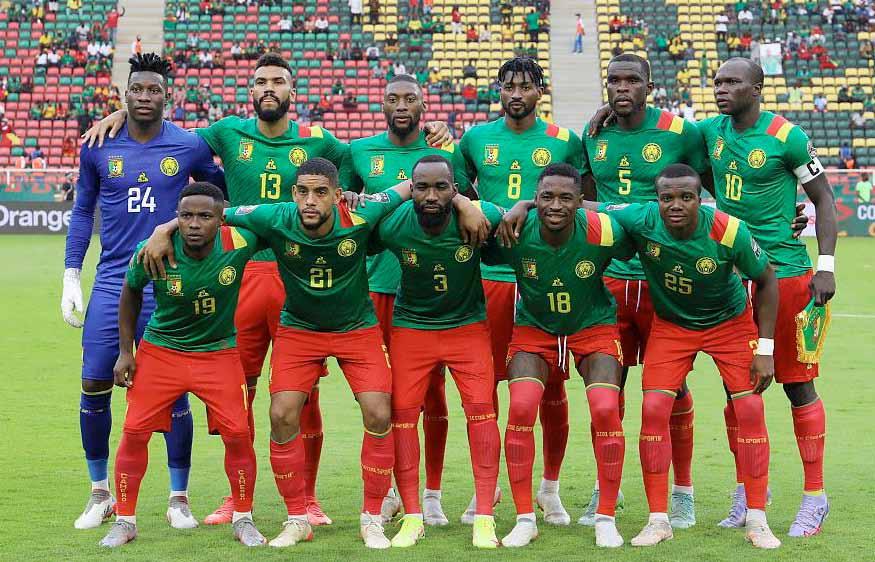
Rigobert Song, one of the Indomitable Lions’ most capped players, was appointed coach in February after the African Cup of Nations. The team is in Group G with Serbia, Switzerland, and Brazil, which is one of the most successful teams in competition history, having won the title five times. Cameroon advanced to the quarterfinals of the 1990 World Cup in Italy, but have failed to advance beyond the group stage in five subsequent
appearances. But this time, with arguably Africa’s best frontline at their disposal, they hope to break the curse.
The Cameroon national team will be armed with three European-style players in the 2022 World Cup to match their World Cup success in 1990: André-Frank Zambo Anguissa of the Italian team Napoli, Eric Maxim Choupo-Moting of Bayern Munich, and André Onana of the Italian team In ter.
The trio of Anguissa, Moting, and Onana are the most prominent members of Cameroon’s team, which is ranked 43rd in the world. In the last eight meetings between the two teams, the Bayern Mu nich striker, Anguissa, scored nine goals.
During an interview with Majalla, Thomas Libiih,
“No team has surpassed the Central Africans’ performance in Italy, where they reached the quarterfinals and were seven minutes away from the final four.”
the former Cameroon international, who played in the 1990 World Cup, relived his African ex perience and expressed his expectations for the 2022 World Cup.

Libiih is a retired Cameroonian footballer who played for various clubs including Tonnerre Ya oundé and Ohud Medina. He was one of the best players in Italy in 1990.
He competed in both the 1990 and 1994 FIFA World Cups. Libiih played for LDU Portoviejo in
Ecuador for a short time. Guy Stephane Essame founded FC Lotus-Terek Yaoundé, a Cameroo nian feeder team of Russian FC Terek Grozny.
“I had the honor of representing the Cameroon national team in the World Cups of 1990 and 1994,” Thomas Libiih began his talk with Ma jalla.
“My World Cup memories are vivid. I’ll never forget the historic moments in the 1990 edition, such as defeating world champion Argentina, reaching the quarter-finals, and playing a perfect match against England,” Libiih added.
In response to Samuel Eto’o’s claim that the Cameroon national team will win the World Cup, Libiih stated: “Each of us has our own point of view and sees things through the lens of our own culture. Yes, it’s football, and nothing is impos sible, but we must always respect our opponents, and ultimately, I respect Eto’o’s viewpoint.”
In terms of his predictions for African football and the five teams that will represent the conti nent in the World Cup, Libiih stated: “The brown
“The African teams qualified for the 2022 World Cup are preparing to enter the arena of matches, hoping to pull off a surprise this time, because the conditions will be favorable.”
continent has a great history in football, but it has always been flawed by not dealing more promi nently in major international tournaments such as the Olympics and the World Cup, but I hope that this changes in a copy 2022.”
On the Cameroon national team’s fortunes, he said, “We hope to appear in good shape that meets the expectations of our fans, but we must be cau tious because no match in the first round is the same.”

“I hope that we will provide good technical levels, as we are playing in a tournament that is consid ered the largest in the world, and respect all the teams and big stars participating,” he added, “and that we will also express ourselves in the World Cup in a better way, and that the performance of our players improves from one match to the next.”
Regarding Egypt and Algeria’s absence from the World Cup, he stated: “It is a huge loss for African football that there is no big duo of their size, but they must come back and rise in order to eventu ally reach the World Cup, and I have all respect
for the participating Arab trio Tunisia, Qatar, and Saudi Arabia, and I see that they have great capa bilities and potentials that will help them go far in the World Cup.”
On his prediction for the team that will win the World Cup, Libiih concluded his interview by say ing: “This is difficult to predict before the tourna ment begins. All teams are equally fortunate, even if some have a better chance due to differences in capabilities. All of the teams are excellent, with an honorable World Cup history and players at the highest level; perhaps after the first round, we can guess based on results, performance, and individ ual differences.”
“The Cameroon national team will be armed with three Europeanstyle players in the 2022 World Cup to match their World Cup success in 1990.”

Infantino took over as FIFA president in February 2016, just months after his predecessor, Sepp Blat ter, resigned after a 17-year scandal-plagued reign. In June 2019, he was re-elected as FIFA President. He was elected to the International Olympic Com mittee in January 2020.
Prior to becoming FIFA’s president, he was the Union of European Football Associations (UEFA) Director of Legal Affairs and General Secretary. Infantino served as the General Secretary of UEFA since October 2009, having joined the organization in 2000.
He oversaw a team of over 400 people who con tributed to the further strengthening of both national team and club football in Europe, as well as UEFA’s role as a respected and credible international gov erning body.
He has increased UEFA’s efforts to provide a demo cratic and sustainable environment for European football while at the helm of the organization’s ad ministration and in collaboration with the Executive Committee. This has been accomplished through initiatives such as Financial Fair Play, improved commercial support, and a greater role in decisionmaking for Member Associations of all sizes. He also supervised the expansion of UEFA’s compe titions at all levels of the game, including the ex ponential growth of the UEFA Champions League and the expansion of the UEFA European Football Championships.
Gianni led the fight in Europe against social ills and threats to football’s integrity, such as racism and discrimination, violence and hooliganism, as well as
match fixing.
Infantino was born in Brig, Switzerland, on March 23, 1970. He is the son of two Italian immigrants from Calabria and Lombardy. He went to the Uni versity of Fribourg to study law.
Infantino is a polyglot who speaks seven languages: Italian, French, German, English, Spanish, Portu guese, and Arabic.
Infantino joined UEFA in August 2000 and was named Director of UEFA’s Legal Affairs and Club Licensing Division in January 2004. He was ap pointed UEFA’s Deputy General Secretary in 2007 and Secretary General in October 2009. UEFA im plemented Financial Fair Play and improved com mercial support for smaller national associations during his tenure.
He oversaw the expansion of UEFA Euro 2016 to 24 teams and was involved in the creation of the UEFA Nations League and UEFA Euro 2020, which were held in 13 (now 11) European nations at the time.
In response to the recent scandal and acts of vio lence and corruption, primarily in Greek football, the Greek government decided to introduce a new sports law in 2015. As UEFA’s general secretary, Gianni Infantino led the negotiations with the Greek government and backed the Hellenic Football Fed eration’s warning to Greece that it faced suspension from international football for government med dling.
Infantino served on the FIFA Reform Committee.
On October 26, 2015, he received approval from the UEFA Executive Committee to run for president at the 2016 FIFA Extraordinary Congress. He con firmed his candidacy and submitted the necessary declarations of support on the same day. He prom ised that the FIFA World Cup would be expanded to forty teams.
On February 26, 2016, he was elected FIFA Presi dent for a three-year term.
The new FIFA head criticized the United States travel ban on several Muslim-majority countries in 2017. He stated, “When it comes to FIFA com petitions, any team that qualifies for a World Cup, including its supporters and officials, must have access to the country; otherwise, there will be no World Cup. That is self-evident.”
Following the 2018 World Cup, Infantino was awarded the Order of Friendship medal by Vladimir Putin in 2019.
When Infantino accepted preferential treatment from Russia and Qatar, the question of a potential conflict of interest was raised. The hosts had ar ranged private jets for Infantino and his entourage to travel to Russia and the Gulf state.
The investigatory chamber concluded that no viola tion had occurred. Furthermore, the chamber deter mined that “human resources issues, as well as Mr. Infantino’s conduct with regard to his contract with FIFA, if any, constituted internal compliance issues rather than an ethical matter.”
While the investigatory chamber discharged Infan tino, the criticism continued. FC Bayern München Chairman Karl-Heinz Rummenigge chastised Infan tino for failing to keep his promises about transpar ency, democracy, and governance.
Further allegations surfaced in July 2020, when Infantino was accused of holding a secret meeting with Switzerland’s Attorney General, Michael Lau ber. Lauber offered to resign after a court ruled that he covered up the meeting and lied to supervisors during his office’s investigation into FIFA corrup tion.
Infantino defended himself, claiming that “meeting
with the attorney general of Switzerland is perfectly legitimate and perfectly legal. There is no violation of any kind.”
In terms of migrant workers, when asked about abuses suffered by migrant workers involved in the
preparations for the 2022 FIFA World Cup in Qa tar, Infantino stated that migrant workers were given work and pay rather than charity and that they were proud to contribute to the stadium’s construction. Amnesty International, a human rights organization,

has condemned the tournament, alleging that work ers were subjected to forced labor.
Infantino married Lebanese Leena Al Ashqar, with whom he has four children. He supports the Italian club Inter Milan.

Love them, hate them, or wish they could have just been an email: meetings remain an essential fixture of life and business in any company. Of all the major paradigm shifts in the world of work over the past three years, the meeting has remained stubbornly crucial. But how you ask your team to meet is evolving, and quickly. And it’s about to enter the metaverse. While the metaverse is currently in the throes of bad press thanks to the laughably bad unveiling of Meta’s digital environment and Zuckerberg’s nightmarish avatar, it’s still poised to become part and parcel of the future of corporate work and gatherings. As metaverse offerings improve, these digital spaces will
increasingly cater to executives and managers. The endless stream of work-hack apps that your HR department keeps begging you to use won’t go away, but they will migrate into the metaverse via plug-ins. The world of remote work is set to get even more virtual. Knowing how the meta-office will affect your life as an entrepreneur is the best way to prepare for the future of work.
BYO HEADSETAs remote work cements its position at center stage and employees draw lines in the sand around hybrid models, the metaverse will naturally figure into negotiations. Instead of a Zoom meeting across multiple time zones, the
metaverse offers the possibility for full bicontinental coworking in a common workspace. Employees can don a headset or join a thoughtfully designed virtual room and cowork with a much more satisfying physical nuance and casual proximity than that offered by a video screen. And as with all new technology, it will get progressively better and cheaper.
Providing a headset will become as commonplace as companies providing a work laptop. Not every metaverse will require a headset, but don’t be surprised if, within the next decade, there is an expectation that remote employees have headsets on-hand to hop into the metaverse for a meeting. Just like how the guy talking into his headphones at a coffee shop no longer raises eyebrows, it’s not impossible to imagine that one day, someone using a headset for a quick call will be equally unremarkable. Like video calls, metaverse participation won’t be a 9to5 requirement. But it will be a regular occurrence, particularly for more in-depth meetings throughout the week.
So you’ve provided your employees headsets and you’ve made it to the meta-meeting. What happens once it’s over? The metaverse, like any platform, is built to keep users engaged for as long as possible.
Instead of vying for a promotion during a round of golf, the metaverse offers your employees a variation on the “third space.” The desire to keep people involved means metaverses for the office will be built to facilitate casual conversation and social interaction.
Right now, gaming is the entry point for most metaverse engagement. Massively Multiplayer Online Role-Playing Games (MMORPGs) are arguably the first iteration of the current metaverse, which has a surprisingly long history. When offices enter the metaverse, they break down the social barrier between Slack and Twitch. We will see more office-centered “organized fun” that mimics the tone and breadth of immersive video games. Knowing how to anticipate and navigate the shifting social obligations of a meta-office will behoove employees.

Human resources departments will naturally shift to meet the needs of a company that subscribes to a Metaverse-as-a-Service. Codes of conduct and mission statements will need to change to incorporate metaverse integration. Avatar choice and afterwork gaming guidelines will be built into new-hire orientation.
Although some suspect they’re a bit overhyped, DAOs (decentralized autonomous organizations) do create an organized way to facilitate community decisions. Most metaverse projects are built on the blockchain and offer participation through token ownership, which is a fancy way of saying they operate like the
Green Bay Packers. The more tokens you own, the more votes you get.
Unlike shareholders, however, DAOs do not have a central authority making the final call. So what happens if the metaverse your company chooses is facilitated by a DAO? This sets up employees to potentially have a real say in how that metaverse operates.
Potential decisions subject to employee input via a DAO could involve building bigger or more varied virtual meeting spaces or how and where corporate branding is displayed during presentations.
Will meeting minutes be able to be logged as NFTs on the blockchain?
Are corporate negotiations held in the metaverse allowed to be recorded?
Should this metaverse allow its developers to make the necessary changes to incorporate the newest plug-in?
These are the types of things that employees using a corporatefocused metaverse’s DAO might vote on. It benefits forwardthinking business leaders to understand how DAOs work. Now is the time to learn, because things are quickly evolving.
Once corporate metaverse participation becomes as normal as checking your team’s Monday board, there will be a designated manager (probably from HR, at least until Metaverse Community Resources becomes its own department) facilitating the purchase and distribution of the tokens necessary to participate in that metaverse of choice.
This also means when there’s something employees want to see changed, or an experience that needs to evolve, you’ll have a built-in meta-advocate who can propose it to the DAO.
The metaverse is coming to the office, regardless of how entrepreneurs and company leaders feel about it now. The next decade will likely see the development of an entirely new sector of office management to facilitate the inevitable remote and hybrid accommodation of meta-work. Employers who anticipate these changes will be better prepared for success. No matter where in the world you are, you’ll be able to swing by the “office” for a minute.
This article was originally published by Fast Company.
Don’t be surprised if, within the next decade, there is an expectation that remote employees have headsets on-hand to hop into the metaverse for a meeting.Credit: TNS
Helen Mongelia’s 102 years reflect the mysterious al chemy of genetic, environmental, and lifestyle factors that coalesce to aid longevity. Fresh food, consistent move ment, emotional resilience, and a family full of long-living relatives mark the centenarian’s colorful life span, which began in 1919 while Woodrow Wilson occupied the White House.
Longevity like Mrs. Mongelia’s remains extraordinary,
with an estimated one in 6,000 people in the United States reaching 100 nowadays, according to the U.S. Administra tion on Aging. More than 100,000 were 100 or older in 2019, triple the number in 1980 who’d passed their 100th birthday.
Scientists, including those at Harvard, are eagerly study ing people in their 90s and beyond to tease out what con tributes to exceptionally long living. People enduring to extreme old age often have lifestyles that fuel vigor and hamper age-related chronic diseases such as heart disease,

cancer, and diabetes. They typically are nonsmokers, are not obese, and cope effectively with stress, according to the National Institutes of Health (NIH). Most are women.
“I didn’t expect to live this long, that’s for sure,” says Mrs. Mongelia, who lived independently until 101 -- when she also gave up driving -- and happily holds a mailroom job at her assisted living residence in Connecticut. “But I’ve tried not to let anything bother me too much. I have two great daughters, two sons-in-law, and two grandchildren -- what else can you ask for? There’s my happiness right there.”
Mrs. Mongelia never restricted her diet, eating meat but skipping most alcoholic drinks. But her early fare as the middle child of 11 was abundant in fruits and vegetables, many grown in her family’s garden in Carbondale, Pa., and canned to enjoy all year long. The large clan also walked “everywhere,” trekking miles round-trip to church, school, and the grocery store.
Mrs. Mongelia’s healthy habits hit a sweet spot that sci ence increasingly spotlights as optimal for longevity. A new Harvard-led study spanning 11 years and involving 2,400 people (average age 60; 55% women) suggests that a Mediterranean diet rich in fruits, vegetables, and healthy fats may dampen inflammation and prevent age-related frailty, a major predictor of decline affecting between 10% and 15% of older adults.
“Frailty is hard to define, but it’s really easy to spot. In general, it’s a state of increased vulnerability,” says Court ney Millar, a postdoctoral research fellow at the Marcus In stitute for Aging Research at Harvard-affiliated Beth Israel Deaconess Medical Center.

“It’s important to focus on frailty prevention and treat ment, because it’s associated with so many of the factors that determine someone’s longevity,” says Millar, a co-au thor of the study, published online May 12, 2022, by The American Journal of Clinical Nutrition.
Another new study suggests that young adults who begin optimizing their diets at age 20 by veering from typical Western fare to more whole grains, legumes, and nuts could increase their life expectancy by more than a dec ade. Published online Feb. 8, 2022, by PLOS Medicine, the study posited that people who start such dietary shifts even at age 60 can still reap substantial benefits, increasing life expectancy by eight years for women; 80-year-olds could gain another three-plus years.
“I’m certainly a believer that food is medicine,” Millar
says, “and there’s some great evidence that dietary factors can improve longevity.”
Mrs. Mongelia’s family is peppered with relatives who’ve had far longer-than-average life spans. Although her coal miner father died of black lung disease at 78, Mrs. Monge lia’s mother lived to 93, and many siblings also thrived into their 10th decade. Two brothers still survive.
Research reinforces this link: siblings and children of longliving people are more likely to live beyond peers and re main healthier while doing so, according to the NIH. A study published online May 28, 2022, by The Journals of Gerontology, Series A: Biological Sciences and Medical Sciences suggested that children of those who reach 100 carry a specific “genetic footprint” explaining why they’re less frail than peers whose parents were not centenarians.
Might our genes be the linchpin to longevity? “My take is that it’s certainly a combination of lifestyle and genet ics,” Millar says. “Certain dietary factors and even exer cise regimens can modify how our genes are expressed and contribute to what’s going on in our bodies. It’s a really important intersection of our health.”
Some scientists use the term “biohacks” to refer to tweaks in daily habits and choices that aim to tamp down inflam mation and blunt aging’s effects. Many of these tactics aren’t new, but Harvard experts say that employing them consistently might contribute to longevity.
Move more. Vigorous movement has repeatedly been linked with lower risks of heart disease, diabetes, obesity, and other chronic health problems.
Review your health history. Talk to your primary care doc tor about your health conditions and any new symptoms so you can manage them appropriately.
“It’s important to focus on frailty prevention and treatment, because it’s associated with so many of the factors that determine someone’s longevity.”Credit: Pexels
Try intermittent fasting. Compressing meals into a six- or eight-hour window each day boosts the body’s natural pro cess of eliminating damaged cells and proteins, lowering inflammation levels.
Eat a plant-forward diet. Antioxidants from fruits and vegetables and fiber from whole grains all help to lower inflammation levels. Beans, chickpeas, and other legumes were hailed as a key dietary predictor of longevity in a study that found a daily dietary increase of just 20 grams (less than an ounce) of legumes lowers our risk of dying in any given year by 8%.
Boost your outlook. List your life goals and imagine a fu ture where they’ve been reached, or think about three good things that happened to you every day. Write them down.
Despite a hardscrabble path that included dropping out of school after 11th grade to take care of a baby sibling
and also working as a button operator in a dress factory -- where she earned three cents per dozen buttons mounted -- Mrs. Mongelia maintains an upbeat attitude that matches her hardy body. She relies on a walker and hearing aids, but remains mentally sharp. “Just keep going and going and going, and don’t give up,” she counsels.
A recent Harvard-led analysis of nearly 160,000 American women linked positive outlook to extended life span. Pub lished online June 8, 2022, by the Journal of the American Geriatrics Society, the study analyzed data and survey re sponses from women who were 50 to 79 years old when they enrolled in the study in the 1990s. The researchers then tracked participants’ survival for up to 26 years. The results suggested that higher levels of optimism correlated with higher odds of living beyond 90.
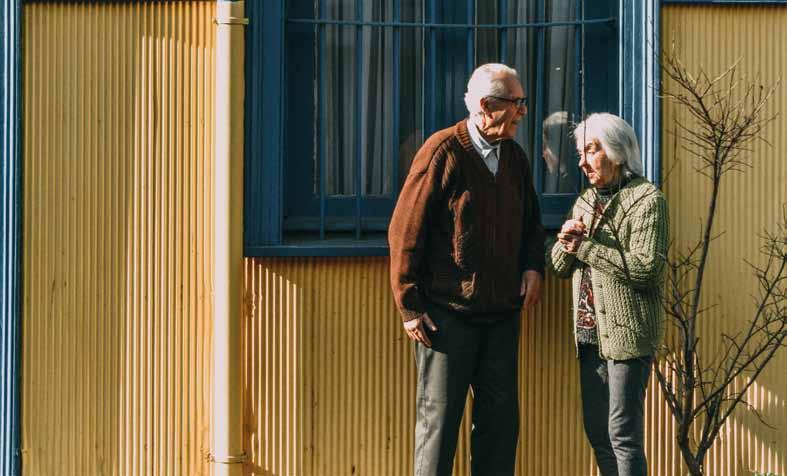
About a quarter of the relationship between optimism and living longer may reflect health-related factors such as eating healthy foods, controlling weight, exercising, and limiting alcohol, says study co-author Dr. Hayami Koga, a researcher and doctoral candidate in population health sci ences at the Harvard T.H. Chan School of Public Health.
The findings hint at the value of focusing on positive psy chological factors as possible new ways of promoting lon gevity and healthy aging, Dr. Koga says. “There’s some evidence that optimistic people are more likely to have goals and the confidence to reach them,” she adds. “I think it drives people to be more confident and take actions that lead to better health.”
This article was originally published by Harvard Wom en’s Health Watch.
List your life goals and imagine a future where they’ve been reached, or think about three good things that happened to you every day.Credit: Pexels


Cryptocurrencies, particularly Bitcoin, promised to finally give people an alternative to an otherwise highly centralized and controlled currency. Since the introduction of fiat currencies, money stopped deriving its value from a linkage to some metal with intrinsic value. Instead, it now derives its value from public faith in the sovereign. And this sovereign isn’t some altruistic charitable entity but rather a selfserving one that will continue to abuse this power of producing money. Bitcoin produced this alternative – a decentralised currency with a predetermined supply that cannot be changed without everyone agreeing. Its future is now being questioned by the collapse of FTX, which is the topic of this article.
FTX, a cryptocurrency exchange worth 32$bn, has filed for bankruptcy, and its CEO Sam Bankman-Fried is currently being investigated by the U.S. Securities and Exchange Commission as well as the Department of Justice. This all started with Mr. Bankman-Fried›s rise to fame in 2017, when he founded a crypto trading firm, Alameda Research, as well as FTX, a crypto exchange platform. In just three years, the platform became worth 32$ billion, and he accumulated a net worth of 24$ billion. He was known for aggressive market strategies, political lobbying, hosting conferences with Bill Clinton and Tony Blair and donations during times of trouble in the crypto world, handing out a 1$ billion worth of bailouts.
“There are decades where nothing happens, and there are weeks where decades happen.” In a matter of 10 days, the 32$bn exchange platform collapsed. It all started at the beginning of November when a report by CoinDesk showed that Bankman-Fried›s trading company Alameda Research had 5$ billion worth of FTT which is FTX exchange native currency supposedly created to ease trade. In addition, this trading firm›s foundation was in FTT and not some fiat currency. This led to concern that Bankman-Fried had enormous leverage over value. To make matters worse, Binance, one of the biggest exchange platforms, said they would sell their FTT position worth 529$ million. This led to a mass withdrawal worth 6$ billion in a matter of days, which FTX didn’t have the liquidity to pay. As such, its CEO started seeking 8$ billion bailouts to no avail, leading to bankruptcy and the resignation of Bankman-Fried. The CEO tweeted about the collapse, blaming “poor internal labeling» causing them to miscalculate leverage and liquidity.
This has have been called the “2008 of the crypto worlds,” in which millions of retail investors› money was lost, reducing the value of many cryptocurrencies, and causing a surge in withdrawals. No one can calculate the consequences and magnitude of the shockwave this collapse will cause. However, the shape in which the crypto market finally emerges will reveal the resilience of the first natural experiment of its kind.




























